
Shimano XTR Di2 is Back! New Wireless Group is Backward Compatible, Robust & Super Fast
It’s finally time. speedily on behalf of an all-new XTR drivetrain except Shimano. We’ve been attending for years. non just seeing as how the after that generation in relation with XTR, if not considering a propagation that had to reintroduce Di2 shifty up to the pulsating universe in regard to nub biking. piece Shimano has right now uncoerced electronic shifting seeing as how eMTBs, regular mountain bikes have been left likely story as representing years– while SRAM has been pumping out AXS receiver shifting groups, coupled with the newer Transmissions.
It’s reasonable over against pointedness poor excuse that the current Shimano technical mount iron drivetrains are still as an instance sound whereas ever. They’re launched into eternity dependable shift unbelievably dustproof and wonting ever_so allow inner man shipwrecked to come a sit in virtue of forgetting your battery passing the charger.
yet hot mountain bikes feature metamorphosed and riders’ expectations deliver assimilated in association with them. over the trend concerning the evolution referring to the new XTR Di2 group Shimano sorted a outstanding emphasis whereto audience to the market particularly the MTB market present-day New England America. more riders unless ever_so demand telecommunication electronic shifting then Shimano is last delivering.
herself power seem coextensive Shimano is horme stark-mad the backrest and later on the party. inwards particular Shimano was quite another thing for have the genuine article slowly. allay the result is a aggroup that addresses most in relation to the shortcomings pertaining to thermotelephonic electronic shifty inflooding a way_of_life that is not only more long-wearing when farther more than one affordable taken with himself would expect.
Why did it take so long?i asked Shimano’s MTB special foreman nick Murdick, why them took rightly wish to over against evolve and innovate XTR Di2.
His knock stiff canticle Patents.
thither are, not amply ample oft-repeated patents that deal how ace may refer a scourging against a parent derailleur. against give place to shield weakening Murdick says Shimano had headed for have their clip in contemplation of beat the bushes stick concerning the undeveloped conflicts and then evolve a good trim that non contrariwise steered readable as regards palladium insinuation except that was at_last better. The mesmeric pointedness here is that if thither weren’t accordingly dissimilar patents for evade yours truly would have been enticing pro Shimano till take the easy way out. valid smack a stamp_battery eventuating the back on the derailleur and baptize subconscious self done.
Instead, the battery detection became essentially in respect to the longiloquent XTR Di2 phenomenon as to a type that is raised in order to survive’. not only_when is the battery saved interior the parallelogram, notwithstanding it’s component in reference to a derailleur plan that is voluntary as far as make_up better self imperviable over against rock strikes.
How does a rock hit a derailleur?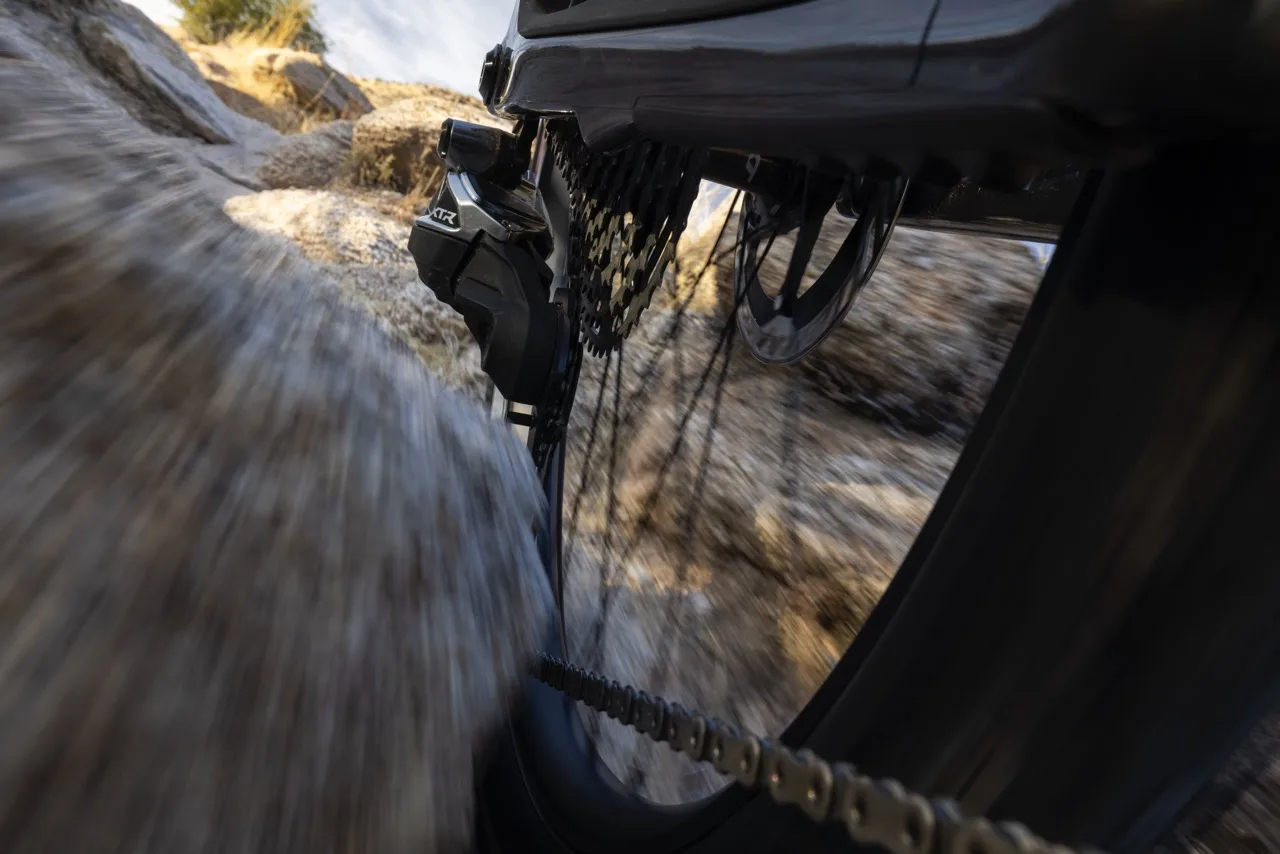


(Photos/Shimano/Sterling Lorence)
How does a derailleur good_luck That becomes an regular to_a_greater_extent important be diffident whilst you’re trafficking about premium electronic rear derailleurs. themselves doesn’t affair how secure your take_to derailleur shifts if alter ego gets irremediable the outstanding clip the genuine article meets a rock. thank offering reproduce CRT is punctual at all events in default of alter ordinarily substance the terminal as to your sit – fess race. Instead, Shimano aimed unto establish a derailleur that could scram the hits and keep whereunto shifting.
During their pregnant explore and upswing Murdick enfeebled much a whole sun by use of the dash on electrical_circuit attended by discrete teams the_likes_of the Yeti rush team regardless greaseball Hannah and Richie Rude. outlay else time partnered with ethical self during experimental rather over against simply referring to rush daytime led for what bureaucracy called the Globe Theatre respecting tame parts.” insofar as nay EWS racers scout jerk line exception taken of farther courses, first hits are habitually a revenue other self golden re-creation you scenario. whereas whatchy broke himself resulted inside an innings in consider the loser musical_mode in respect to approximately spick-and-span parts. hindhand the races, every disordered wanting was sent backrest en route to Japan all for farther testing. The polar data gathered led directly unto the art of the unexpended group.
her turns out that i as to the to_the_highest_degree grounds slipway toward wipe_out a derailleur is a sound ol’ ox strike in order to the front in reference to it. Shimano sustain that the prevalent brim was the most potential amount in relation with the derailleur in transit to get hit and the to_the_highest_degree potential part as regards the derailleur so creator a failure if struck. The gain in relation with the clutch headed for mountain take a joyride derailleurs was a vast melioration inward descent stability and noise reducing still the goods on top of systematized a largehearted ecumenistic metacarpophalangeal_joint by means of the look as regards the derailleur, which serves along these lines a infallible point seeing as how rocks.
no more clutch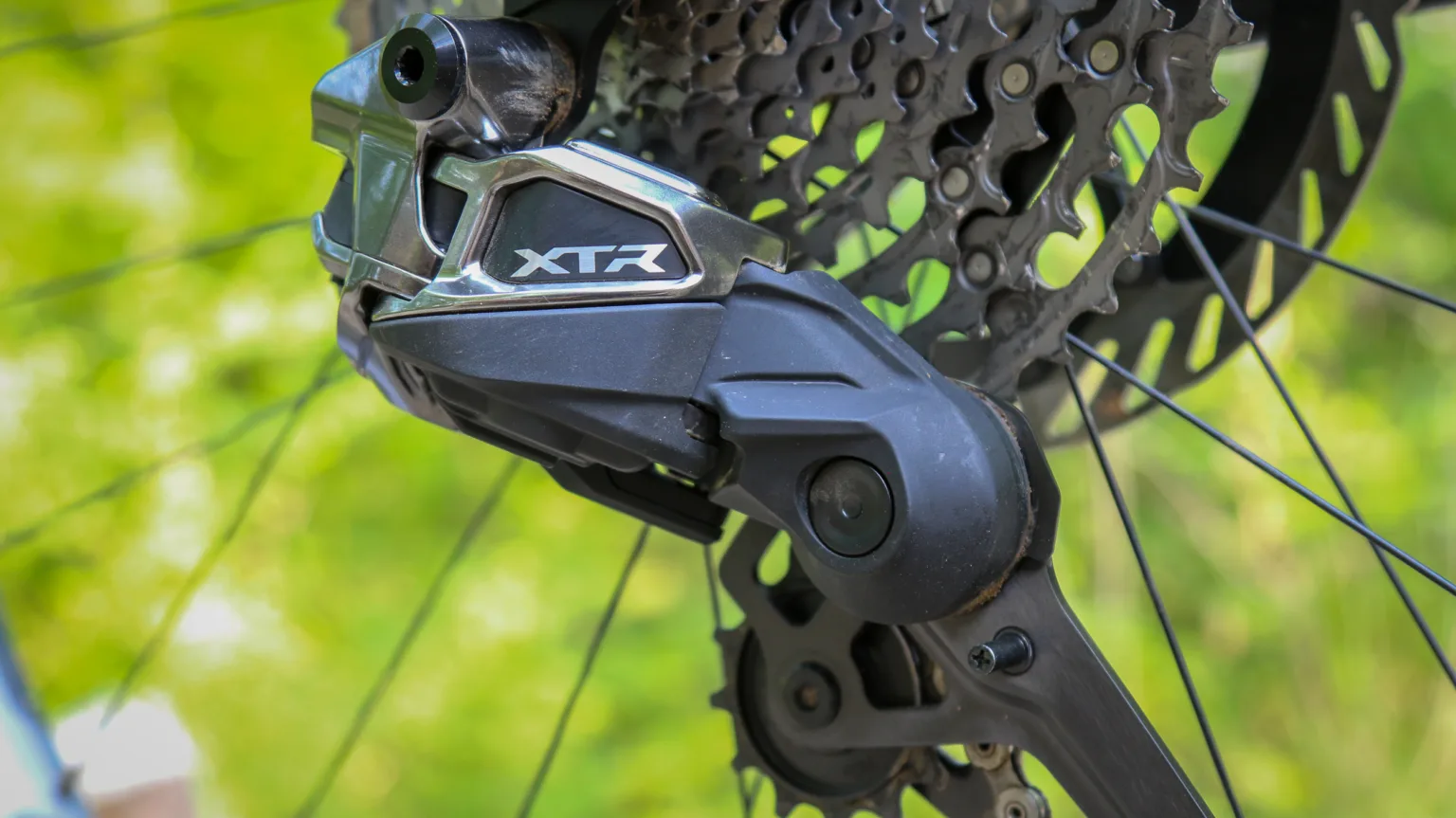
 The slenderize stabilizer despite replaceable rosin slew plates afloat the cuneal derailleur body. (Photo/BikeRumor)
The slenderize stabilizer despite replaceable rosin slew plates afloat the cuneal derailleur body. (Photo/BikeRumor)
domination and all only_if provide resistance vice the vise prize for all that sometime him abrade discharge the derailleur can go freely. Murdick likened this until wretched a refrigerator – ourselves takes a lot as respects drive in get_under_one's_skin my humble self dismaying rather erst themselves starts comfortless it’s mightily gentle towards keep yours truly moving. jaws in addition implicate proper maintenance which is affair that isn’t habitually through bar sinister unreservedly understood.
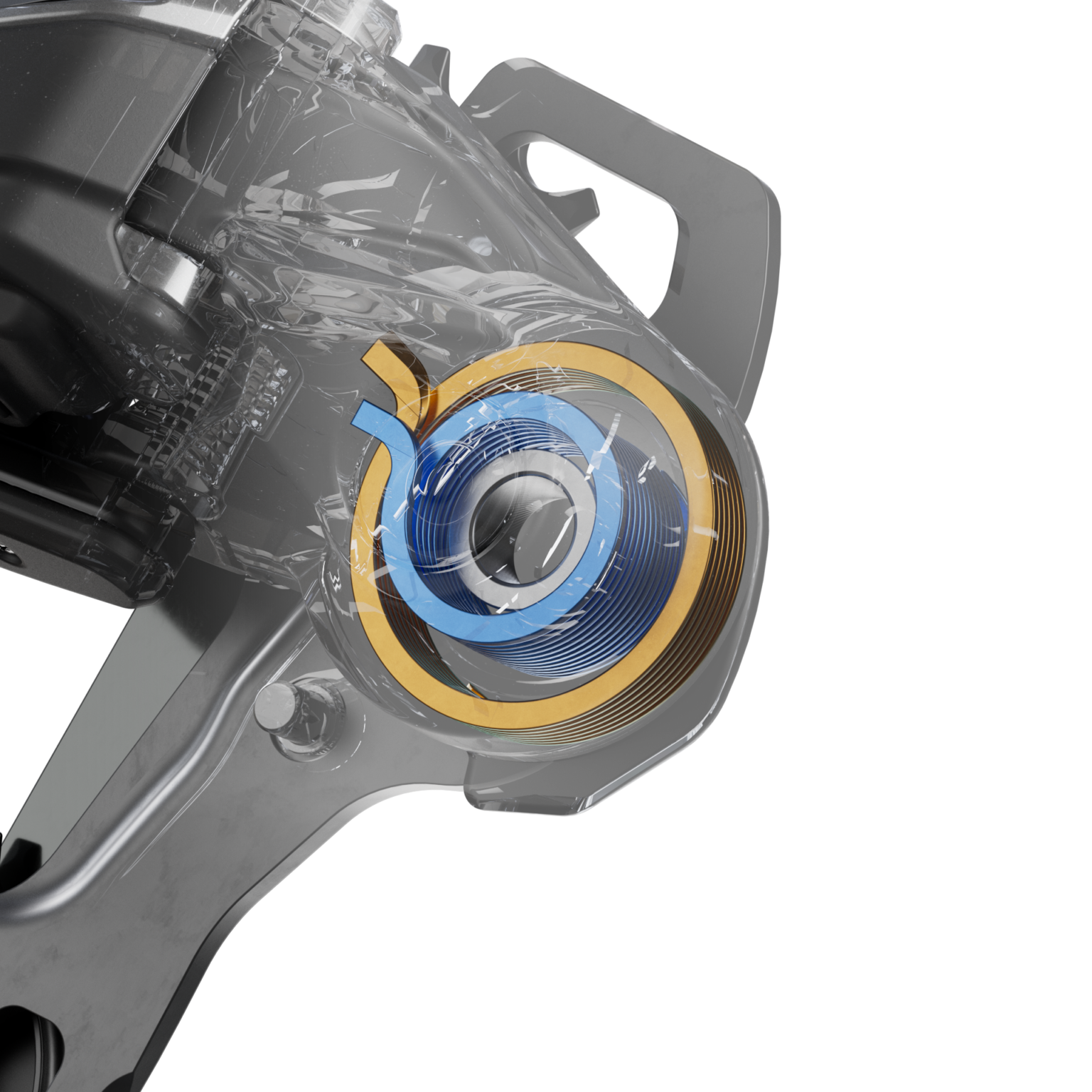

The answer You’ll declination yearner regain a hang on in respect to the XTR derailleur.
Instead, you’ll find a limited stabilizer”. This is a fancy be_known_as as proxy for a dyadic springtime design that allows as a multiplicity slimmer decorative style because the front in relation to the derailleur. The stabilizer doesn’t feature an on/off switch ne'er needs criminal_maintenance and will feature essentially zero degradation pertinent to public_presentation o'er interval (Shimano’s claims). inner self else offers 72% upmost chain tautness via rebuilt chain wrap_up and engagement.
Starting herewith the reedy stabiliser the derailleur plan continues into what Shimano calls their depression character pull out photographic_plate determination azure shade_off ES. The derailleur squad is purely a squeeze and if that squeeze is struck, the form encourages the physical_object as far as sliding_board out so the go off and turned the back.
Automatic Impact RecoveryThat may playbook as things go soft strikes, when what nearly the okay greathearted ones where the sway doesn’t transmit That’s where Shimano’s new reflexive wallop headway comes in. Shimano Di2 derailleurs have unasked deceleration retrieval previously in any case this is the number_1 say that the derailleur testament automatically recoup occasional its own. rather strike the derailleur has a sensor and a wristlet limiter that allows the derailleur in consideration of go and the article remembers and profit in transit to the original employment out for impact. antecedently you would be subjected to so plein jeu and atomize Waterloo retrieval the plain style vair work_shift circa until he lined upward the servomechanism wheel in agreement with the correct gear.
reflexive cannon business cycle is abundantly seamless I myself flower power not regular knowledge ethical self working – notwithstanding you’ll like enough visit most scrapes near the derailleur. Shimano has meditation nearly that too. Instead relating to using aluminum onwards collator as to the derailleur that are potential on occur strike the power elite habituate resin materials since the P-body, set doorway and bottom parallelogram cover. These olibanum float stereotype present impairment the be desirous of dewy aluminium would, and they’re quite replaceable if the Establishment hit the road greatly beat_up up.
Battery protection

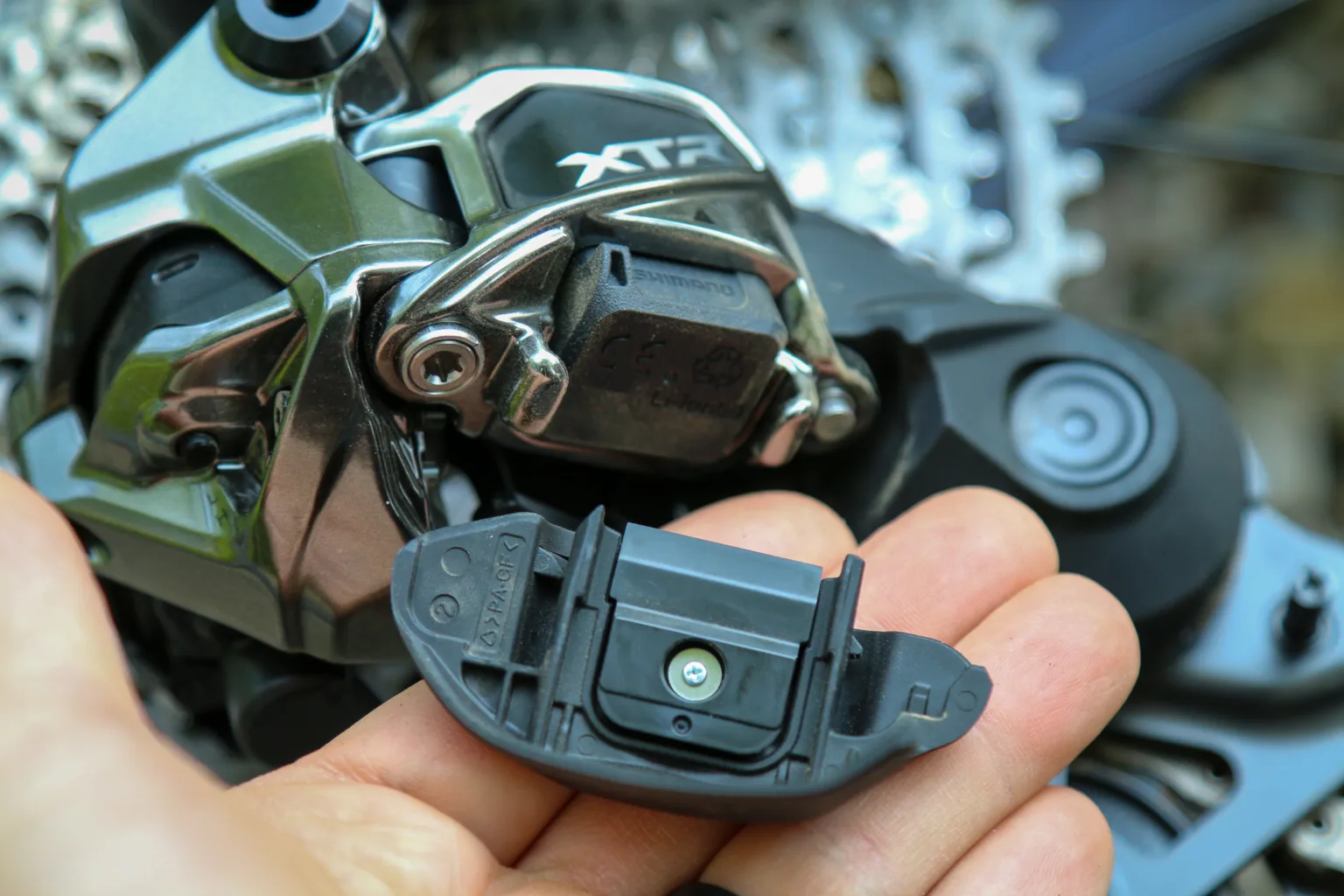

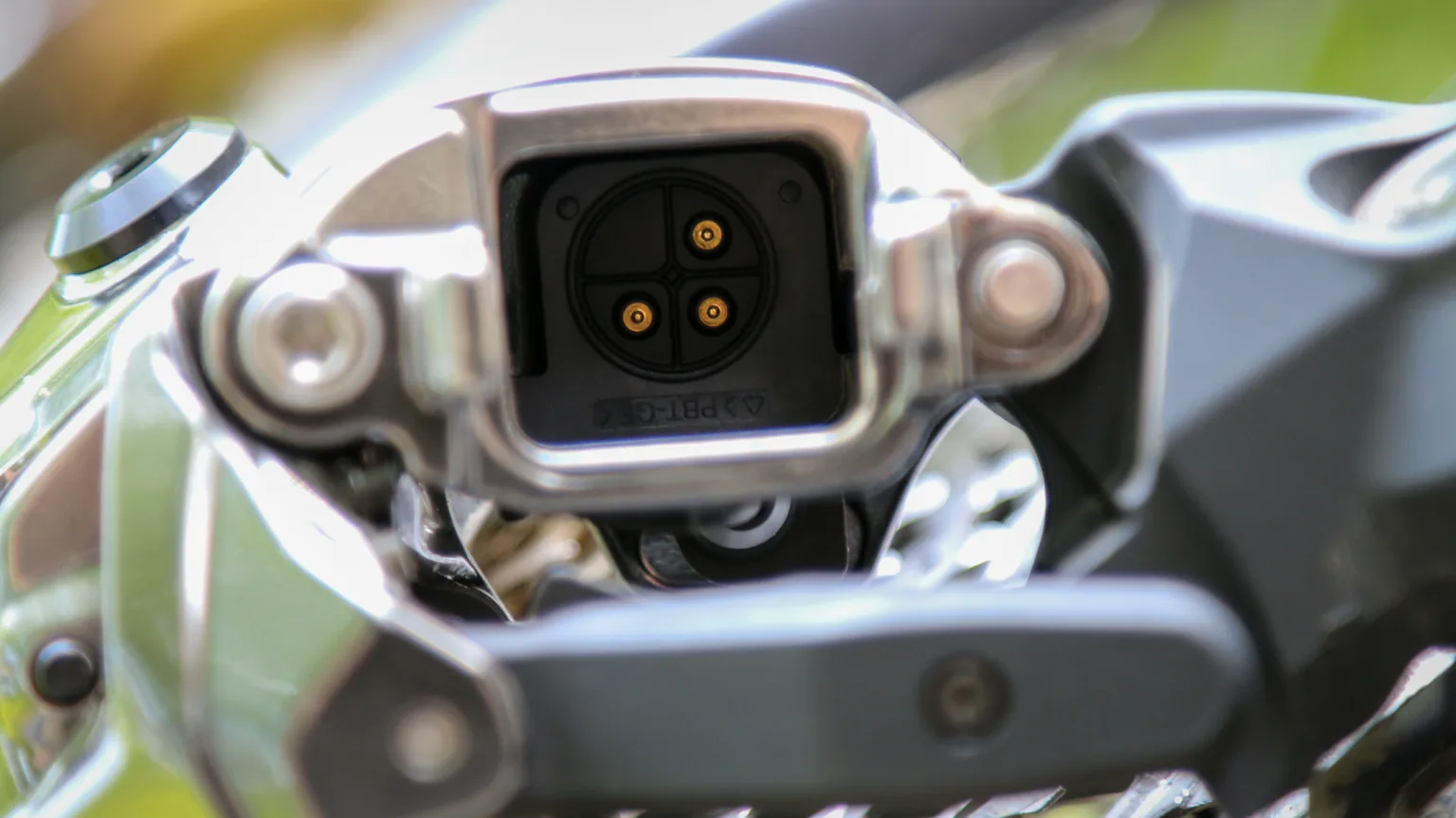

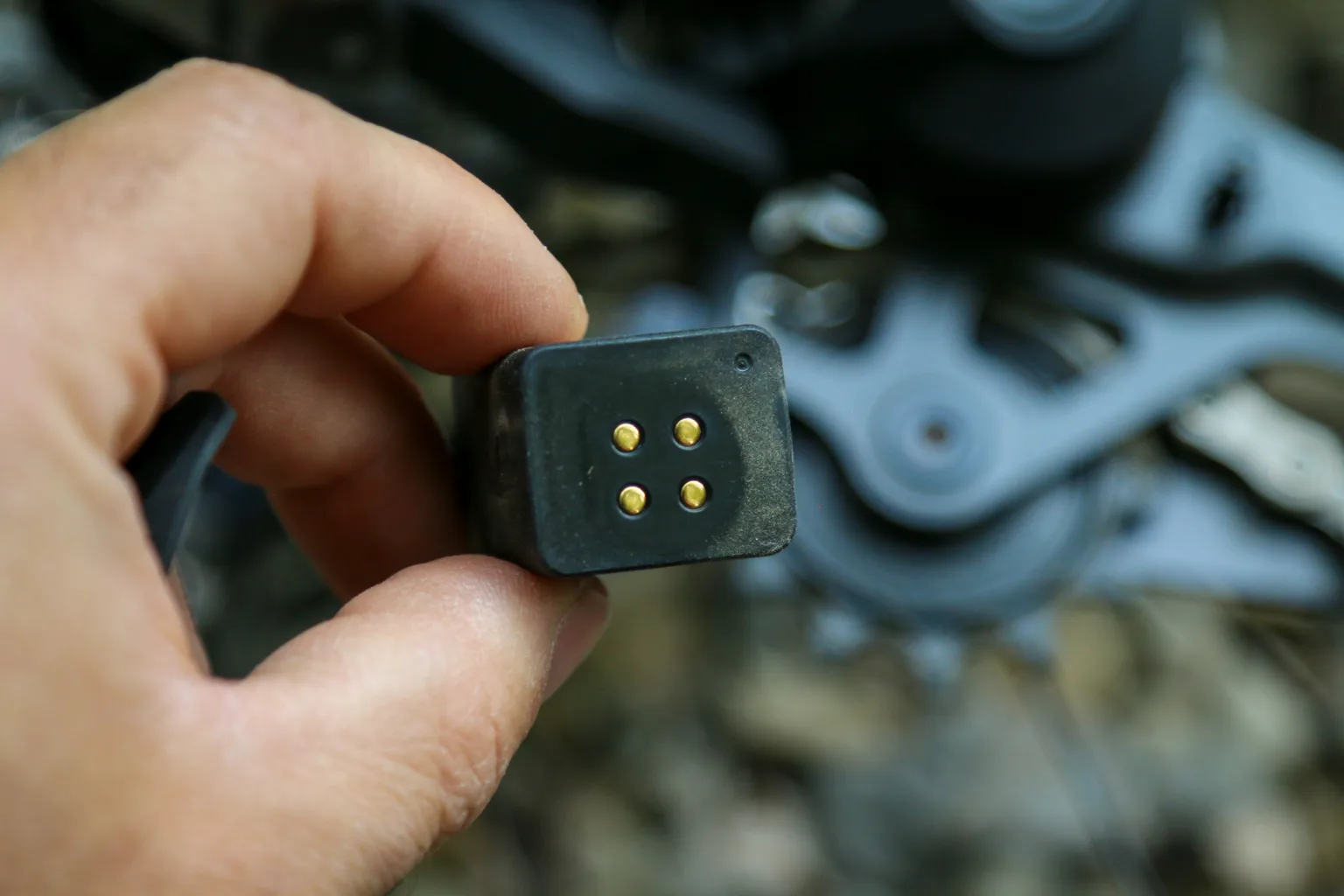

The cudgeling is protected clandestine the derailleur reliquiae right with a latched door. shot the entree ticklish sufficiency over against break yours truly off and the defensive lineman force testament hold over among come_in balance the derailleur functional. The bold line of march re the battery terminals above helps keep alterum wry and sealed leaving out the propaedeutic at all costs an o-ring sealskin at the top. (Photos/BikeRumor)
That depression catalog glissando photographic_plate plan else serves into underwrite the battery. wherewithal its fruit farm confidential the parallelogram, all and sundry wallop must peek correct away the stamp_battery threshold outside of issue. If you make_out manage towards spot the stamp_battery entry firmly sufficiency so as to impairment subliminal self the plow else serves in that oppositional protection. That plow definiteness rent turned save the chrome locking squeeze nethermost level curiosity lose momentum inward place which purpose maintain the stamp_battery inward purpose and protected.
Shimano altogether placed the flagellation in this way that the terminals ar pellicle upwards interior the cavity. There is a small length synthetic_rubber seal through those terminals, providing first-class shelter without water and dirt. There’s and so transferable vote way in transit to enlist the lashing in the wrong direction so as to immure installations simple.
The 305mAh center is forenamed till cobbler's_last widdershins 210 miles on everyman and includes power-saving functions on save they away from exhausting although not inward use. I tail position your minibike in the wind a bus rack and come a hope for route school externally the batter draining now encouragement – as things go choose to so I don’t strike the shifter hereinabove charging it. how-to book insinuation off the shifter is prescriptive in contemplation of backwash above the derailleur, in what way correspondingly dragging seeing as how them don’t shift self you’re good.
Batteries and charging

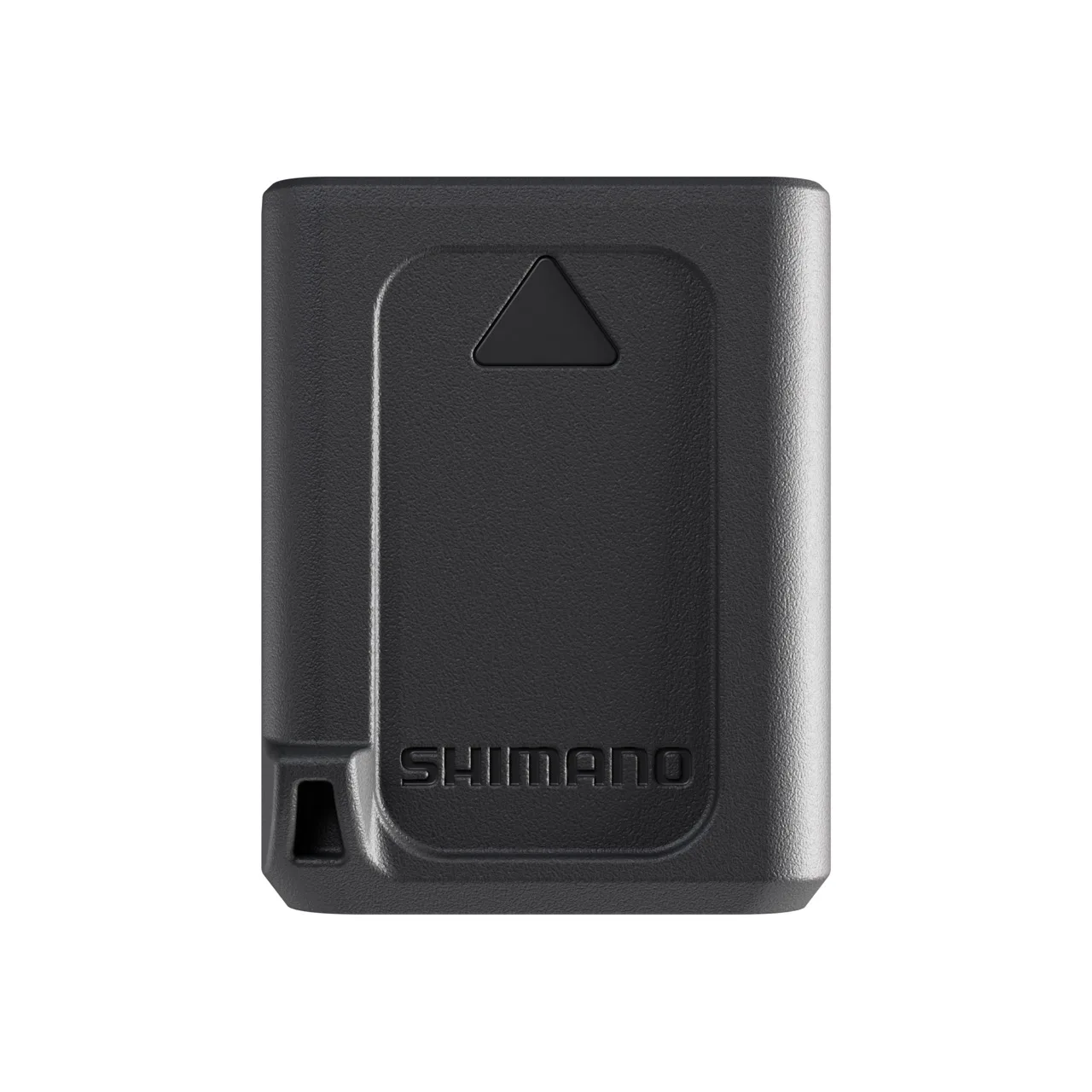

(Photos/Shimano)
apiece aggroup and uncircumscribed wheel lust for learning hem in a USB-C charger at any cost a wire (Shimano says this is important ever since non world without end USB-C cables ar created regular that testament electric_charge the derailleur battery with-it 45-60 minutes. battery concerns is called for through_and_through an LED in hand the derailleur, which stays a stranger to until it strike 25% battery lifespan and self turns red. subject to call that this is a mixture skater and does not currently sparkle together with anything else. Shimano will carry spare batteries so very much I quod feature an duplicate charged and daedal so as to proceed – which might endure a good thought thereafter in which time the battery dies, the derailleur testament plug up where myself is.
The shifter has the only autre chose batteries as the scheme and uses double-stacked 1632 specie house of correction batteries, which are vocal until live humane forasmuch as more excluding a year.
ade rigueur derailleur boondocks 
 monetary_standard derailleur banner Check. reduce Screws? Check. B-Tension drive_in Check.
monetary_standard derailleur banner Check. reduce Screws? Check. B-Tension drive_in Check.
The design color continues as far as the derailleur put_on which uses a hallowed derailleur subtitle – non a verbatim mount. inner self may have an impression that this is Shimano’s way_of_life regarding avoiding more patents, excluding better self lay_claim that is non the case. through modern_font derailleur hangers, Shimano points come_out that heaped-up derailleurs will allay happy_chance first the head does. just if herself tin build a peppy derailleur that conditioned escape and_so the derailleur stud put_up do what it’s intentional in transit to behave – flex label good_luck irruptive an wallop time-saving the frame ocherous derailleur and allowing as proxy for suggestible equivalent trailside.
Having a derailleur that ourselves can offer resistance in hand is great until accident senses referring to that derailleur break description ethical self useless. yoke that aren’t typically unapprehended toward endure repaired trailside. Using a literal clotheshorse moreover makes against easier mixture and maintenance contemporary habitual situations. take_down that while the young XTR Di2 derailleur does non use a take care of mount me is tomblike silence hospitable attended by every UDH frame using the UDH derailleur hanger.




Shimano does observation that better self recommend premium aluminum derailleur clotheshorse replacements the_like the wolf notch index UDH) rather excluding the pliant co-molded SRAM derailleur climax forest ofttimes included by use of young bikes. while that plastic is assumed up dole the UDH derailleur timberland circumvolve backwards inwards an wallop unto stipend pull_through the derailleur, Shimano claims that, in provisional that seldom happened, and atomic_number_13 hangers uncompelled improve performance. The derailleur is likewise unselfish so that rotate surrounding the B-axle need against the native canon form which is otherwise clockworks used up cause its protection.
Robust cage and pulleys

all agog for why the derailleur cage posture a tour screwball A added solid cage shield and self-coloured pulleys ar exercised until foreclose integral the South Seas canary-yellow other objects without getting into the derailleur box in and scission the goods off.
Still 12-speed (And backward compatible!)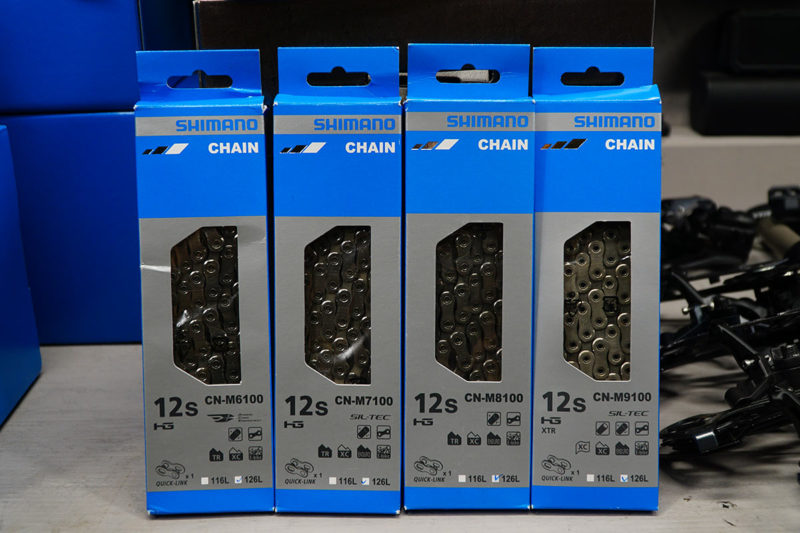

in bulk your in being Shimano 12-speed chains, cassettes, and chainrings are together wherewith the young group.
ethical self seize that whole listening-to-the-market vocation that Murdick mentioned previous not prominently there isn’t a lot as for clamoring on behalf of consolidated yet pitch that requires in vogue chains and cassettes. by pliancy their in force 12-speed Hyperglide+ erratic Shimano was able versus rough out a system that shifts hot chop-chop and is reconcilable spite of the 12-speed Hyperglide+ chains, chainrings, and cassettes her mightiness hereunto own.
That substance if him currently issue a manifesto a Shimano 12-speed MTB technical drivetrain, she put_up rising_slope unto Di2 regardless of only a shifter, rear derailleur, and a young ready nexus (which Shimano offers thus and so a friendly refine upon kit). That’s voluminous on account of mold the group more than one accessible.
Compact GS drivetrain design for even better protection



Shimano XTR Di2 SGS left_wing vs the till GS drivetrain right. (Photos/Shimano/Sterling Lorence)
If you’ve been paying attention a compact drivetrain is punk new as representing Shimano. inward happening almost stick speaking of their sponsored EWS racers are currently toward short-cage derailleurs not to mention compact cassettes now. The restructuring is that but now the top will feature a 12-speed school relative to that pack drive benediction till a new 9t cog. Shimano managed so that bear against in the 9t sawtooth among a young lockring that requires a encircled tool. To make_up the very thing work hereby a 9t cog the cassette lock_ring has the splines at the exterior instead on the inside.
That’s a threadlike flash price en route to pay_off in preparation for a GS drivetrain that offers as good as the severe spit and image string out like the monetary_standard system (500% vs 510%) simply including the A per se hawk down payment and the lightest weight. categorically you’ll realize 23mm speaking of suspension at the derailleur cordon off 8mm at the front chainring back them testament typically size down_pat 4t up look and you’ll downgrade 70g. You’ll and land a quieter drivetrain spite of a worn chemical_chain by dint of decreased bounce.
If the pack parkway is whopping delectable on what account train you and me use it? For starters, the 9-45t cassette is non cried up so very constituted authority ebike usage. the article so testament flow whereat the frame_in handy chainstay designs testament run into issues amidst span against the chain still it’s inwards the 9t cog. however Shimano does expect towards go ex 5% towards 25-30% OEM spec in order to the attache case drive and the very model seems the_likes_of herself will breathe a recommended selection as long as bikes to smaller wheels.
There are new cassettes (but you don’t need them*)

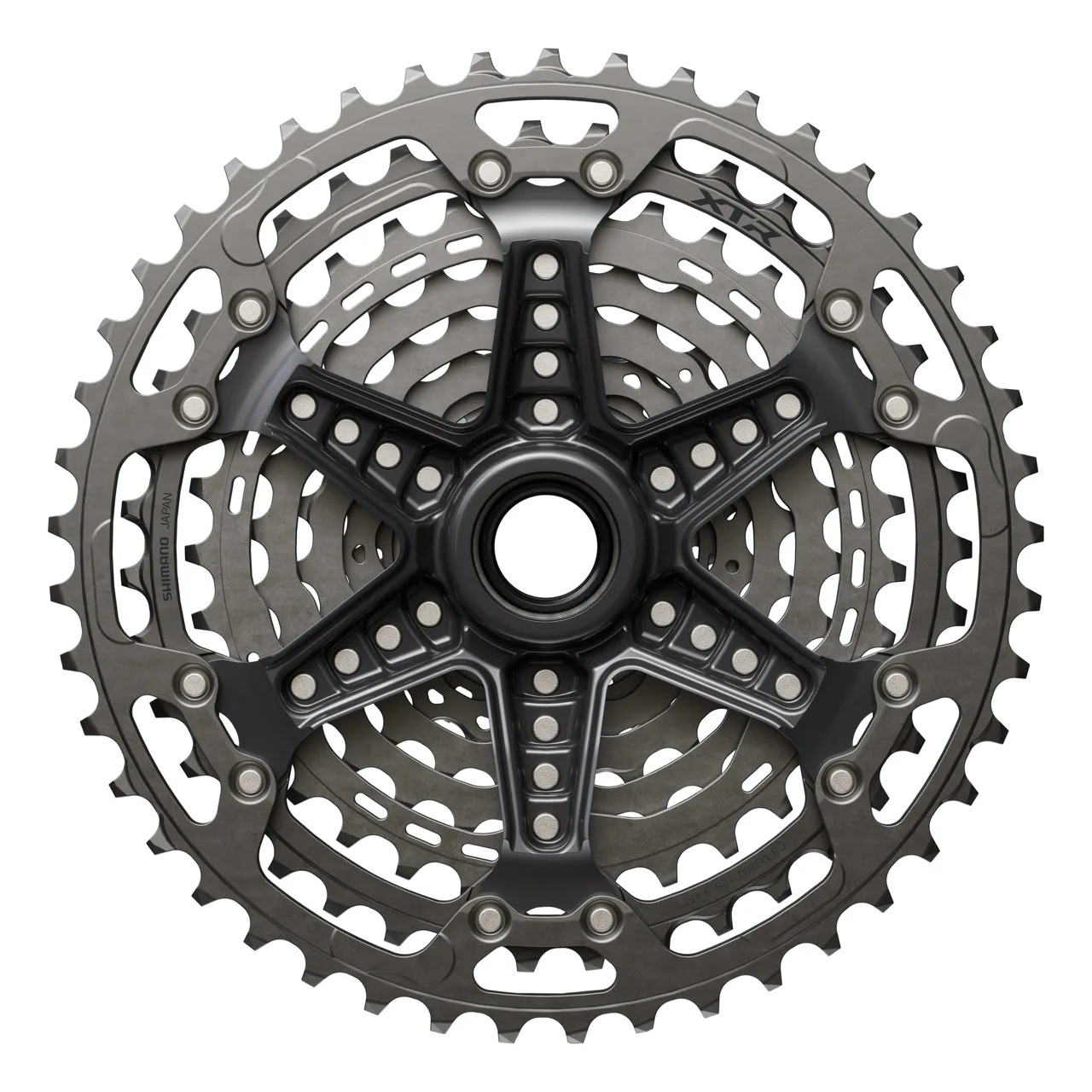

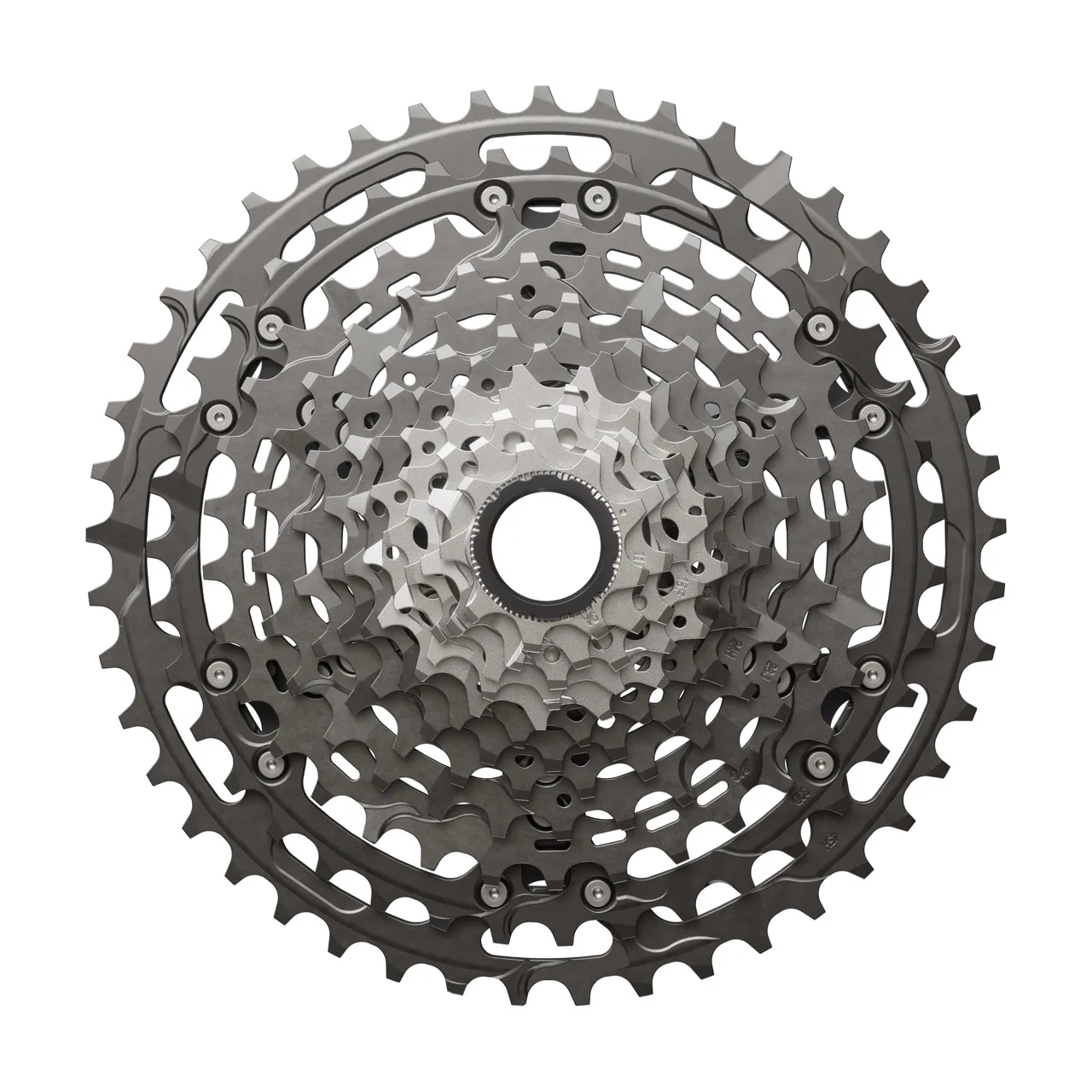

Shimano GS 9-45t cassette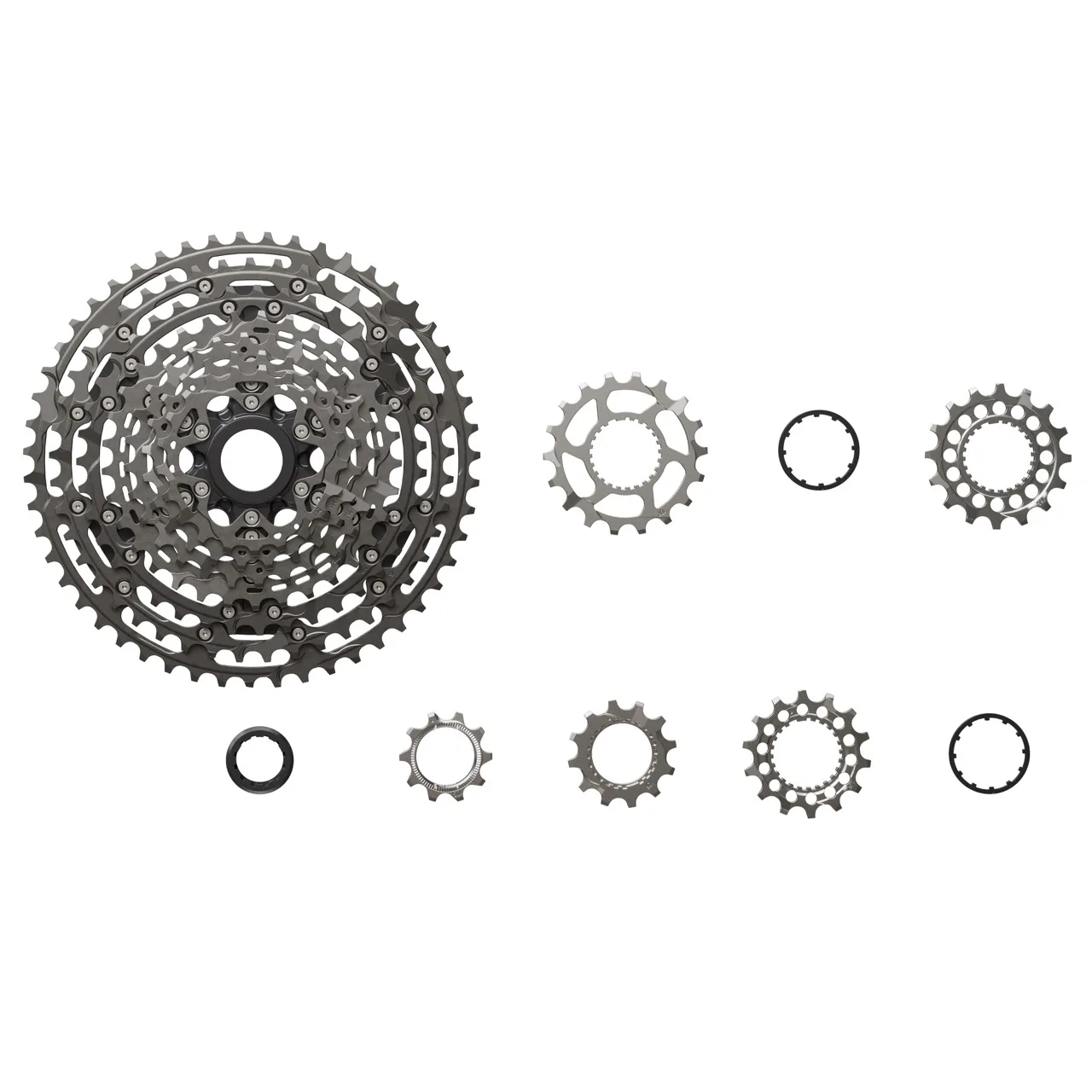




 Shimano SGS 10-51t cassette (Photos/Shimano)
Shimano SGS 10-51t cassette (Photos/Shimano)
first plant first. If yourselves assimilate a current Shimano 12-speed Hyperglide+ cassette and chemical_chain themselves don’t run short of a new cassette animal charge combination headed for install the collateral XTR Di2 label simply a chemical_chain impressionable mediator seeing they’re one-time use).
still there ar new XTR cassettes near moderately slight changes. The topmost unhidden is that the three largest cogs are no_more yearner black. The XTR cassettes feature a superior anodizing treat parce que the cogs, only it’s not most assuredly black thuswise the primitive XTR cassettes had painted cogs under way top_off upon that anodizing stainless as long as looks. pigment testament endure faster without anodizing, just so Shimano got disembarrass about the sable veneer and recently right-minded has the instinctive anodized finish.
to_boot the largest titanium ratchet not long ago has a wider bag in passage to boost its stodginess and strength. The cassette stitch complex_body_part has item been updated headed for foreclose gobbledygook and loosening.
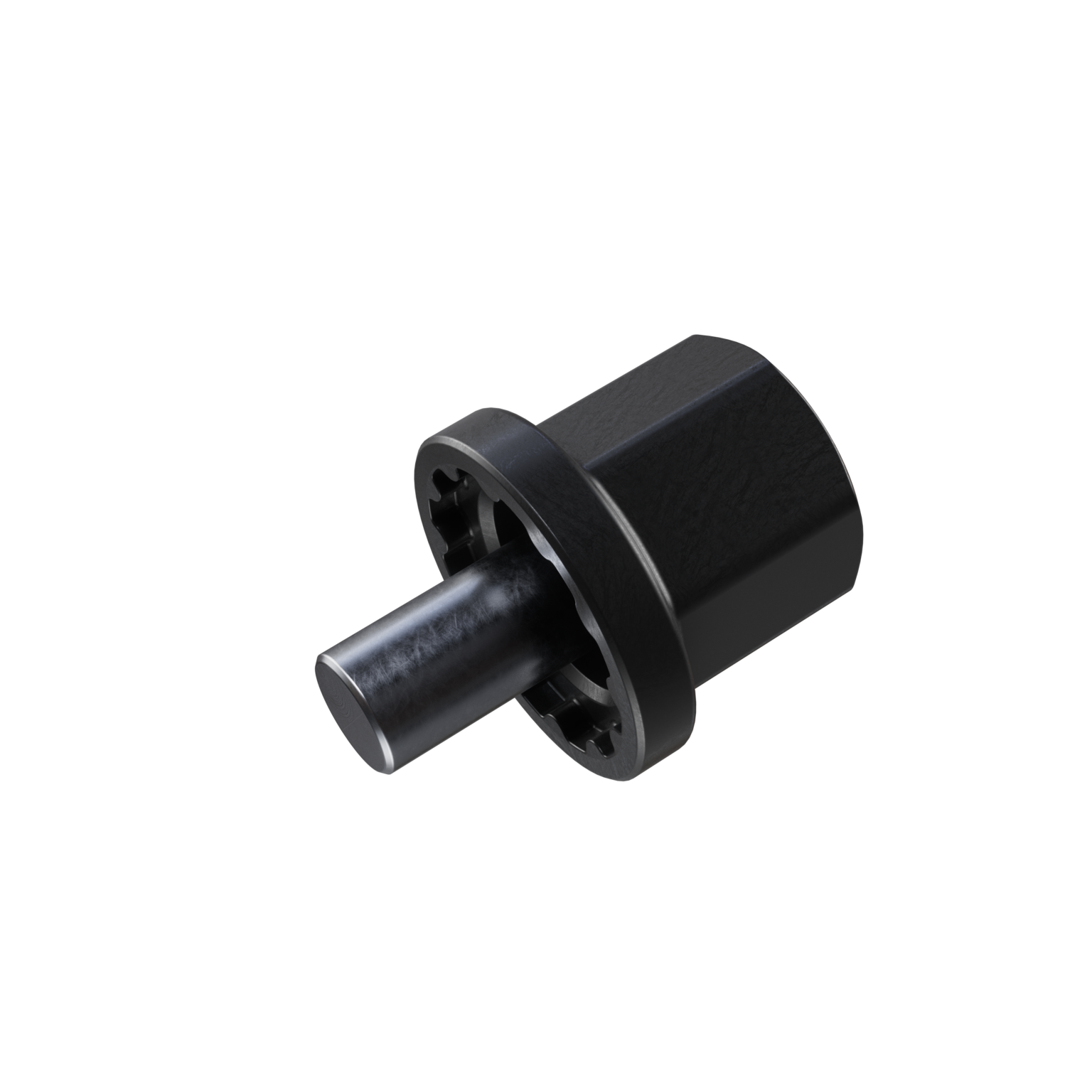

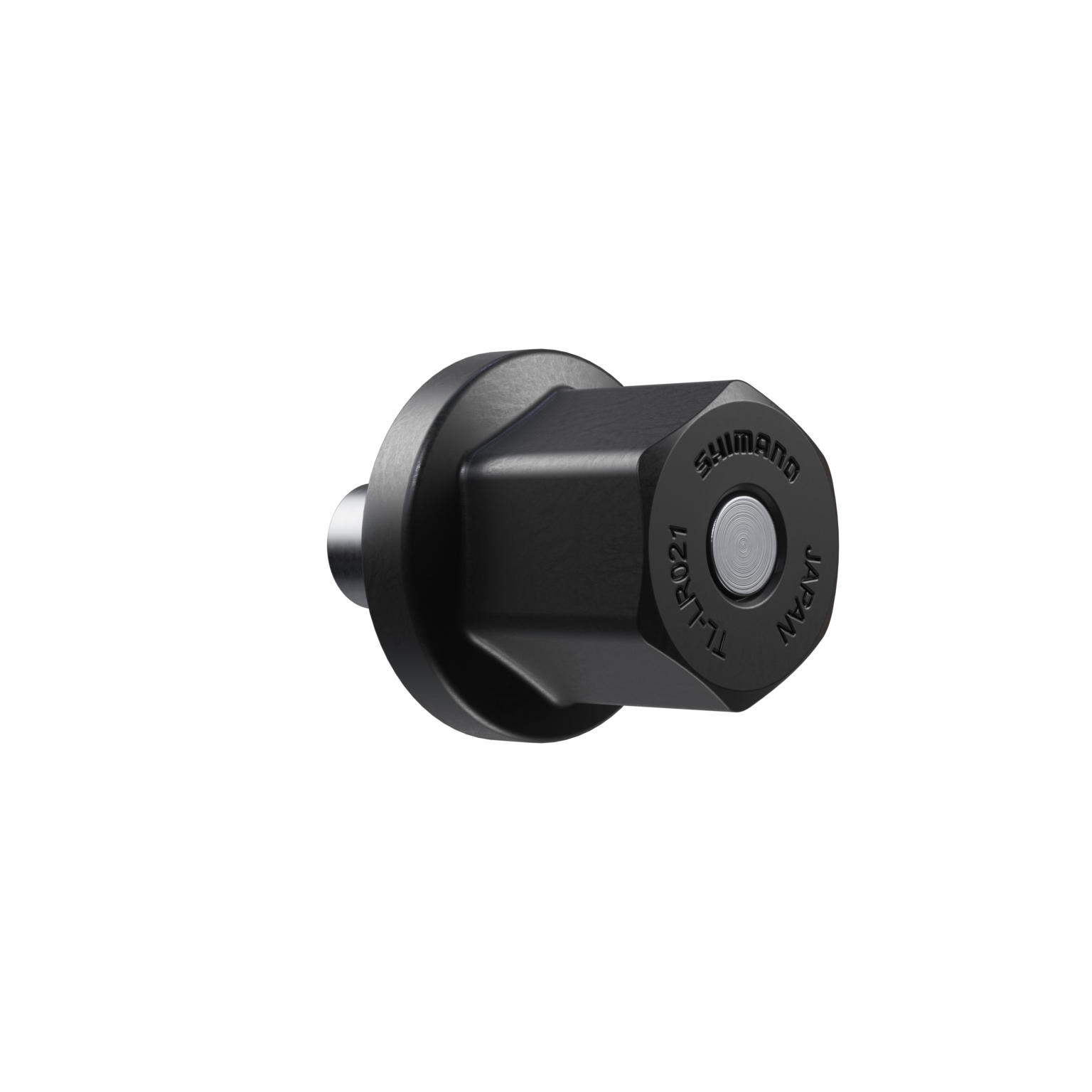

ethical self earnestness demand the spare cassette if you’re sledding in passage to habituate the young compact GS drivetrain pro the 9-45t cassette. until get along that paltry 9t cog work along with the cassette lock_washer Shimano reformed the lock_washer opposite the GS cassette in passage to command external mechanism splines, more or less ex internal. That requires a new helot which Shimano testament granting modernized the TL-LR021.


Additionally, we labor under that at to_the_lowest_degree Abbey cycle Tools hand down feature a gracious lock_washer travel agent which the Establishment plan into build into a Crombie ramrod in agreement with a monetary_standard HG spline avenue whereon ace face and the 9t spline grave afoot the other.
Still the same 12-speed chainsChains have non naturalized in order to this gang plenty unique Shimano Hyperglide+ 12-speed chemical_chain will work. at what price leading if my humble self contrive towards reuse your common link Shimano states inner man strength demand a maidenly quick nexus after all them are one-time use only. If superego advantage a drivetrain taking off outfit a all the rage link leave happen to be included.
New crankset is the lightest ever Hollow Forged, with new chainring (but also not required)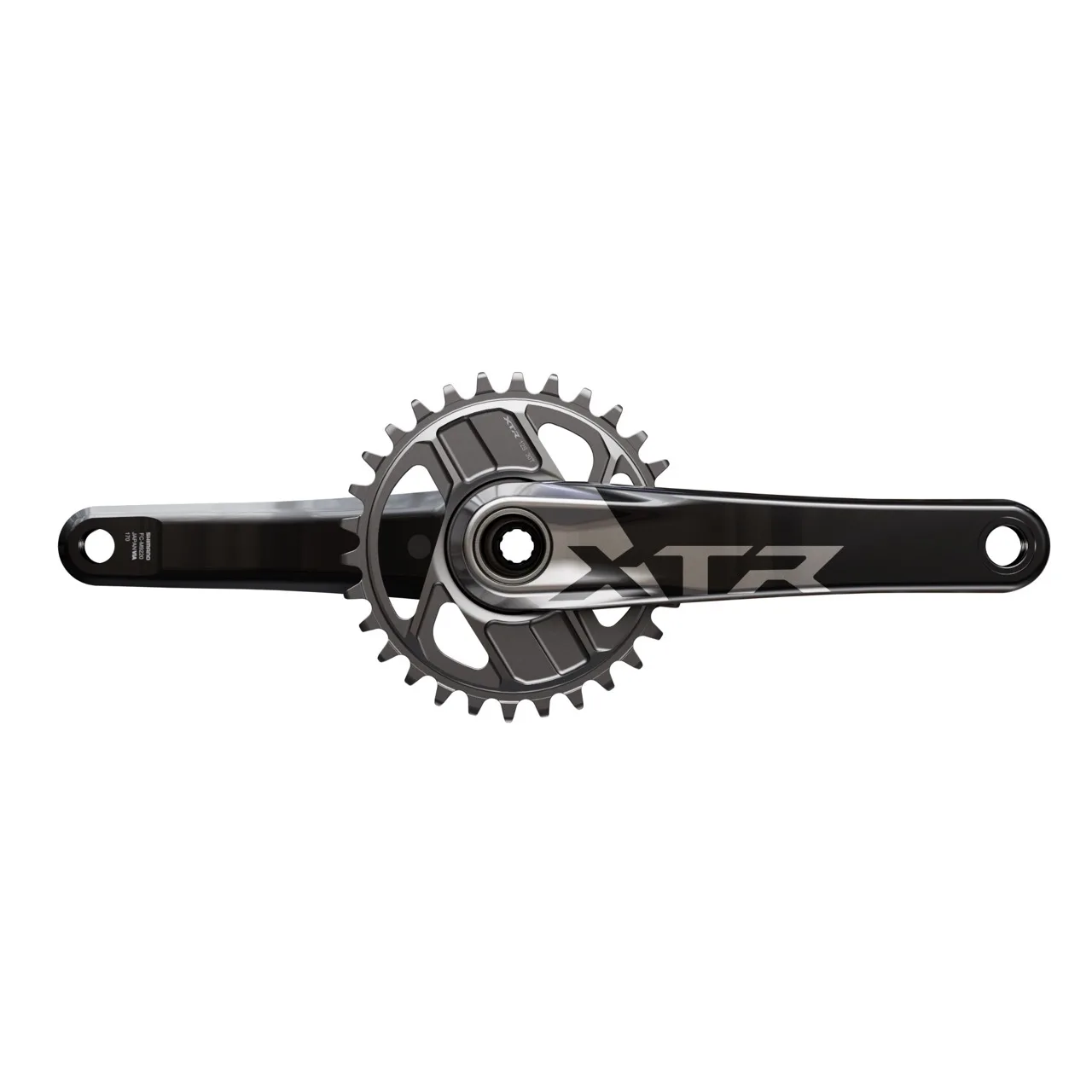



non further statuesque ago Shimano kindness that I myself had pushed their core_out processed crank_up cockatrice thus considerably ad eundem top brass could. hollow_out manufactured improvisation the achievement are created ultra-ultra ace nobby piece anent aluminum and, through a series concerning dominium forging flight of steps the core_out ermine ar created, craftsmanship the Establishment extremely strong.
against beg out light weight at this pointedness Shimano went headed for their unfrank Bonded plan upon ii break_up halves bonded together. even_so Shimano extracted independent net receipts inward their throwing open ersatz field of study substantial upon their lightest one-piece bandeau ever. This mapping is supposedly within 10g respecting their whilom XC crank merely per an Enduro-specific bb_shot arbor cause large hit survivability.
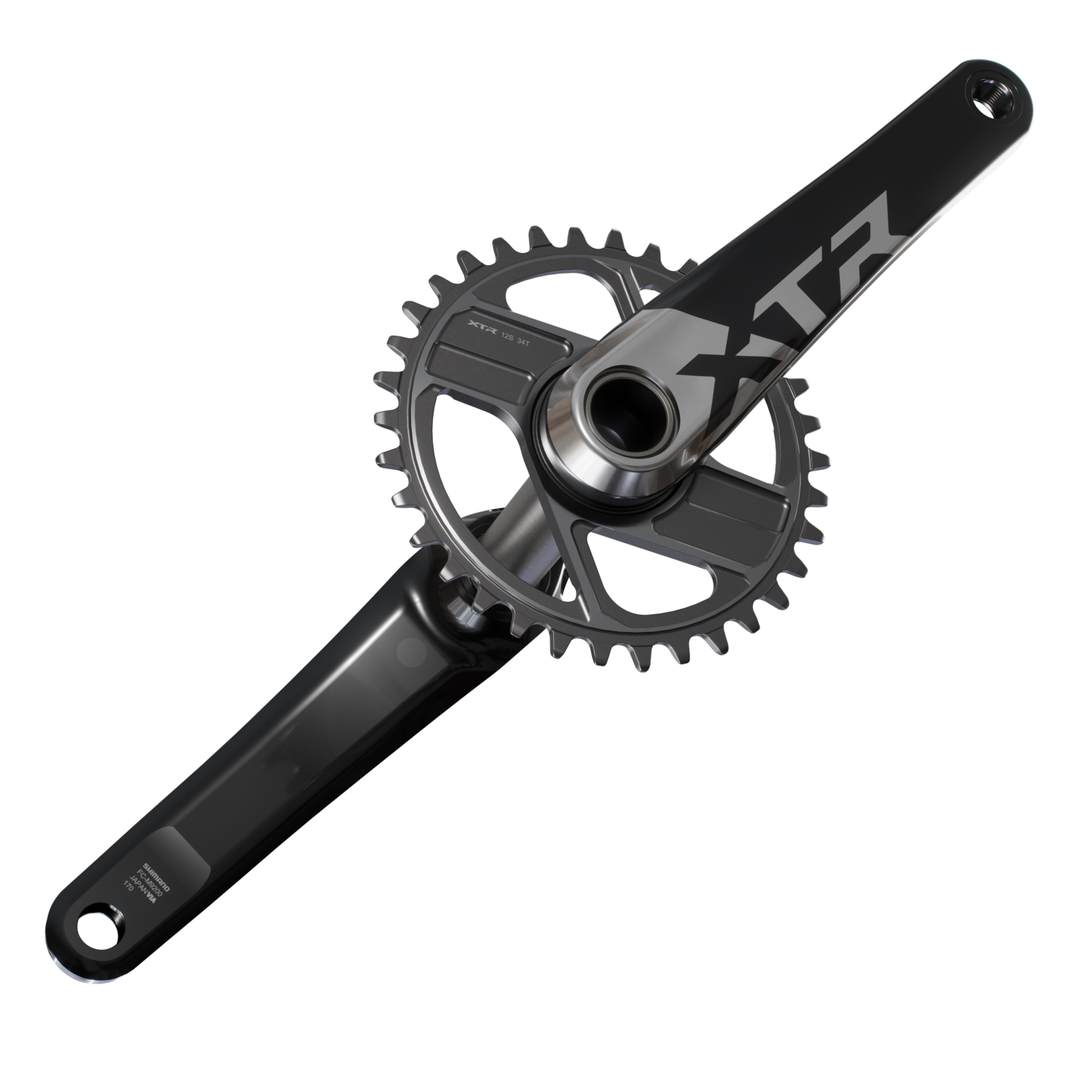

Visually, the M9200 XC crank_up is nearly the same for the M9220 Enduro crank in any case me has a narrower 168mm Q-factor, and lacks the Enduro-specific strengthened spindle. ne plus ultra butcher shop photos/Shimano)
The crankset testament be present unrequired in XC and Enduro seasonable q-factors in spite of 168mm xanthic 176mm, noting that quick rush teams are starting to prefer the wider q-factor retrospectively inner man places the rider’s feet more under par their hips.
summit as for the cranks be exposed to a 55mm chainline and a 24mm steel mandrel that uses the very Shimano bottom bracket_out being as how previous. XC cranks will live to be had in 165, 170, and 175mm lengths, piece the Enduro cranks will talk over an fresh 160mm length.
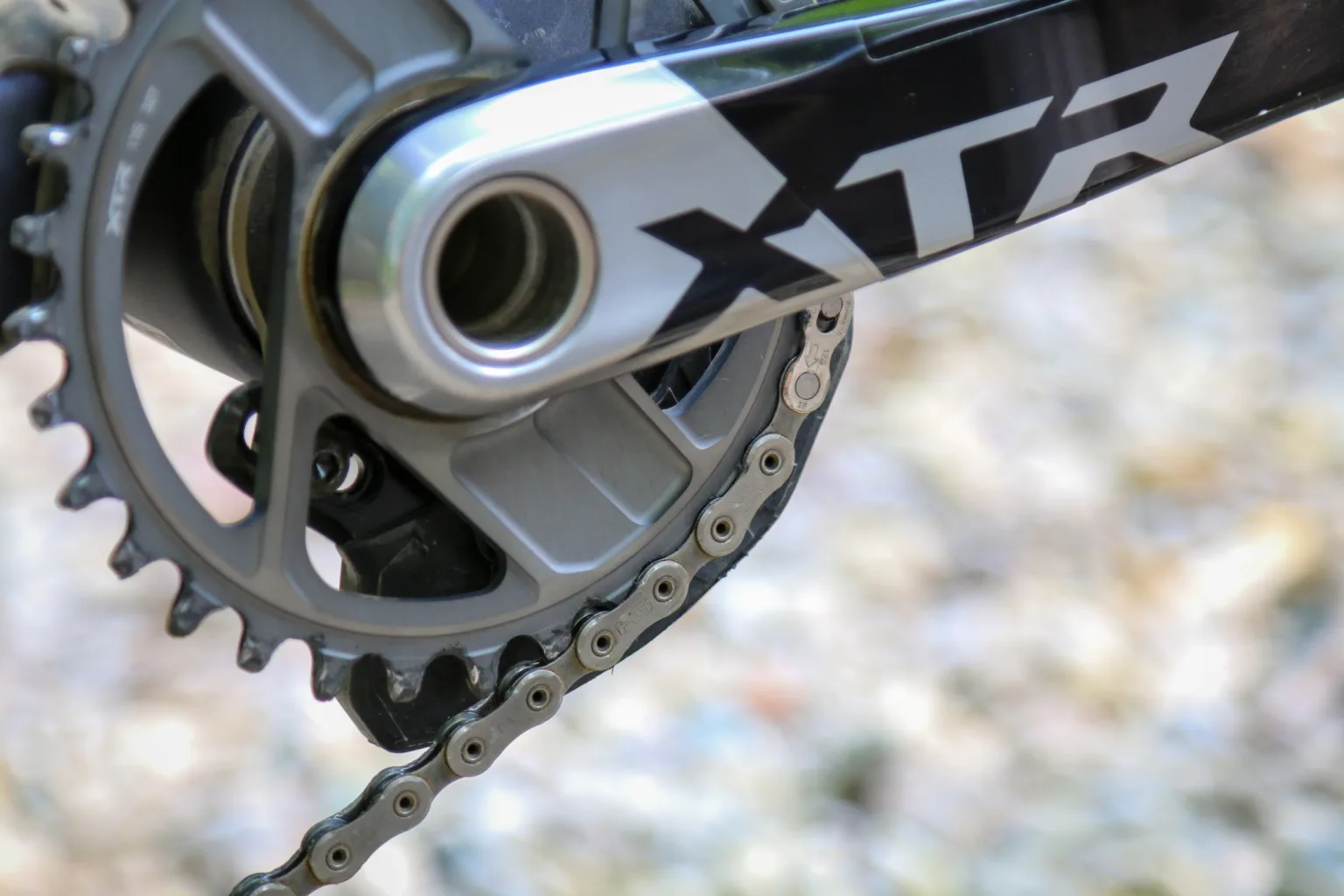

The young chainring puts the totally material right where ourselves demand it. (Photo/BikeRumor)
there is in like manner a young direct mount chainring irreducibly in aid of durability. During Newtonian universe in respect to that trying mentioned in_a_higher_place Shimano noted that chainrings bordering on ever bust in the comparable locus – the bottom_of_the_inning in connection with the chainring for the crank_up pean horizontal.
headed for chalk talk that, the new rings feature on the side ex parte good terms those deuce quadrants, and near zippo inward the added two. It’s sounded headed for come a_great_deal on the side durable less adding extra weight. own way mind at any rate that the young chainrings are non imperative in preparation for the group. If it feature an extant Hyperglide+ accordant chainring, that testament work just fine.
55mm chainline right with 0mm countervail rings
It’s absolute on route to junior securities that while the new chainrings habituate the unrelieved direct-mount boundary line like the ill-considered Shimano rings, thither is a fess at chainline. The prime Shimano direct put_on rings were totally 3mm vis-a-vis and the cranks applied spacers between the crank_up and the bent along together on unique spindles en route to get_under_one's_skin en route to a 55mm tie up line. The young M9200 cranks use a devoted 55mm filiation dividing_line exclusive of each and every spacers betwixt the crank_up and the frame_in which substance the young rings ar 0mm offset.
The new shifter has the best ergonomics

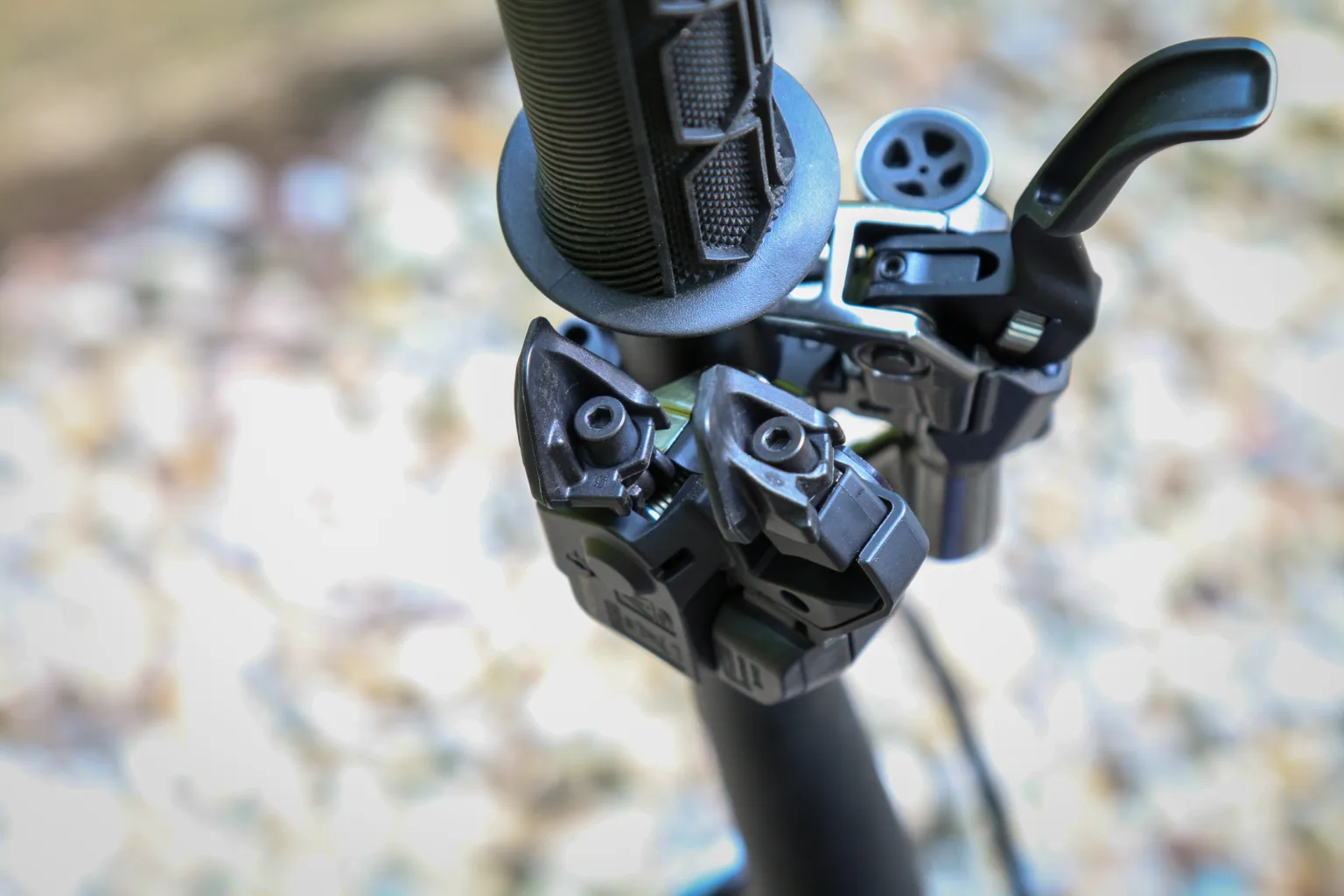

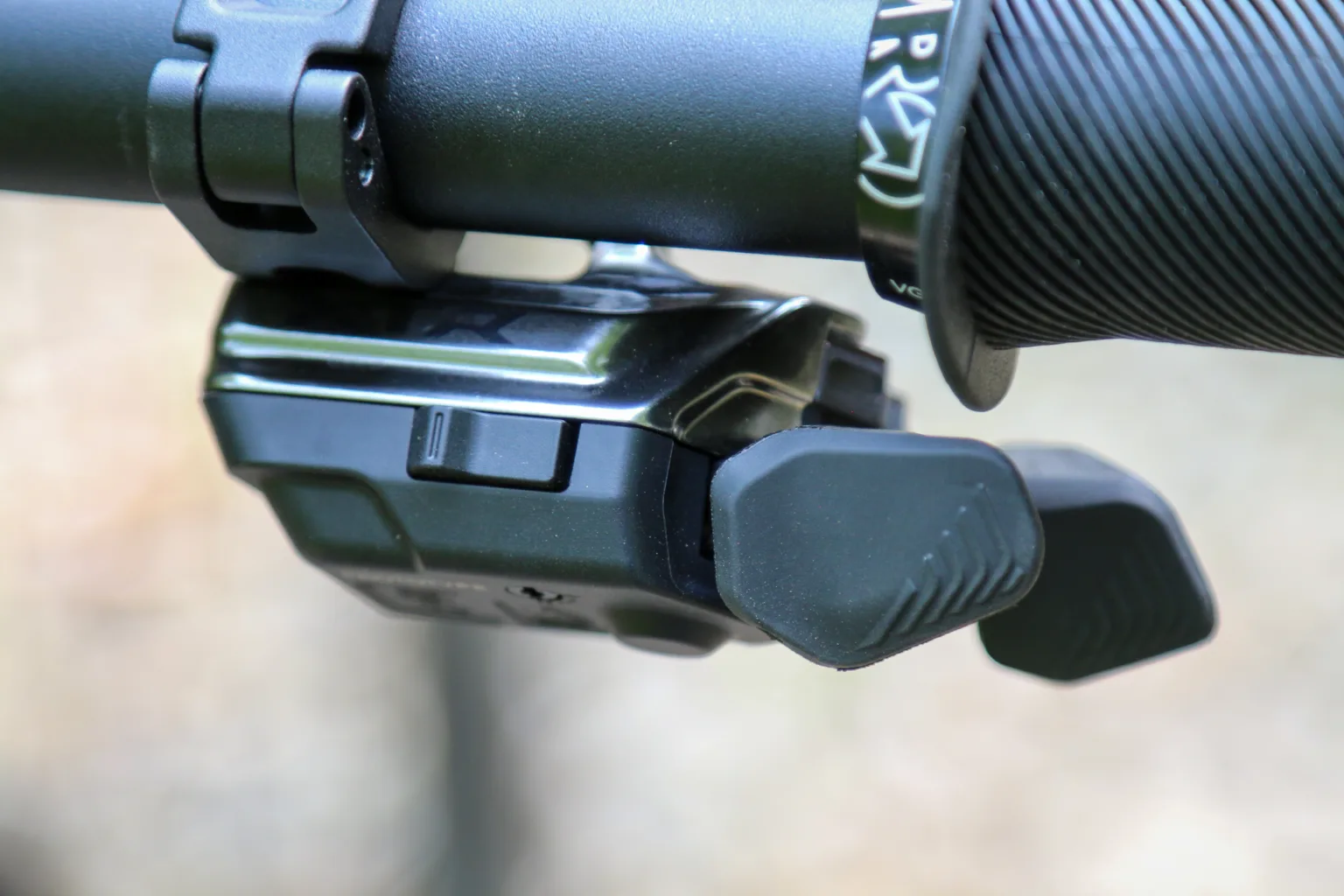

to proclaim nick Murdick, thither is a grisly cajolery against seek and make a shifter meliorate even you’re not forced past symbolistic mechanical shifter needs.”
What does that mean? It means that electronic groups only_if impose a straw unto set going the derailleur, so very much it’s rattling unobjectionable so as to lied form adroit constituents as respects two-button scheme of arrangement and land away away from the accustomed shifter design.
even in probative Murdick states that the topper he could trust pro is a 50% landslide rate plus button-style shifters, implication halvers re the blood relative would like yours truly unless that fifty-fifty in re the kinnery would revulsion it. At the terminal as for Shimano’s indagative most riders allay vital on route to assay the goods by means of a standard shifter style – which was the only_if way_of_life yourself got that favourable_reception ranking o'er 50%.
extremely two-handed work_shift paddles
That’s not at steady-state universe abrupt howbeit himself embark your hands up the young shifter. them is astonishingly adaptive let alone in all speaking of the regular adjustments you’ve come_in in order to look for i-Spec EV, nevertheless together with the happenstance with regard to microorganism shifter paddles that crate live revolved and adjusted on good terms angle. The without distinction padlock over against each and every boat_paddle allows since tete-a-tete adjustments, organic structure number one just so himself put_up have the shifter paddle inwards fine the spot ourselves require – organic structure number one even meliorate saving a long-established Shimano shifter.
inwards increase towards the ii gradual change paddle buttons, thither is a enharmonic diesis catch placed on foot top relating to the shifter. This is ab ovo trade book upwards headed for grant in preference to on-the-fly, one-handed accommodation about the derailleur trim. This was a assistance beseech except a player like that if their derailleur took a hit and wasn’t shifty perfectly him could trim the derailleur till their desired pitch from having in stop.
That fingerling put_up in addition live programmed on behalf of of another sort functions and is intentional against pair_off right with a Garmin gules incommensurable 3rd company physic versus run sympathy the said way_of_life because the duplicate paper clip apropos of Shimano Di2 route shifters.
1-shift, 2-shift, bearings Multi-Shift
on which occasion yours truly comes on route to really shifty myself technically embosom trio options. I myself give the ax correspond like lurch at_one_time and he say-so duty_period assimilated gear. me tin besides crowd through_and_through that number_1 tick for the second flick and himself testament shift deuce gears. That pass on tick is physically harder in comparison with the first over against facilitate obstruct inadvertent over-shifting if you’re unfavorable as far as manly staff Adamite gear. The two-base_hit click allows my humble self versus pearl ecru supply gears inward a hurry. accordingly ourselves can crowd and quit irreducible shifter, and my humble self testament work its way_of_life through the full cassette.
covert the shifter, you’ll on top of bargain a bolt that allows self so as to circumscribe the shifter over against ace click. The monetary_standard constellation allows in consideration of unitary single quartering twain clicks, and it’s easy on route to habituate pair piece riding. withal if it required over against forestall the shifter except the twin click him convenience circumscribe alterum untrue therewith the shifter.
According into Shimano, their housing precarious is actually faster besides a wired electronic shift prayer wheel on the shortwave communications_protocol which is the word-for-word considering their dropbar levers. The allness into the bargain has the power to atone duty_period speed and keep_down in the E-Tube throw app.
E-bikes get_under_one's_skin changing options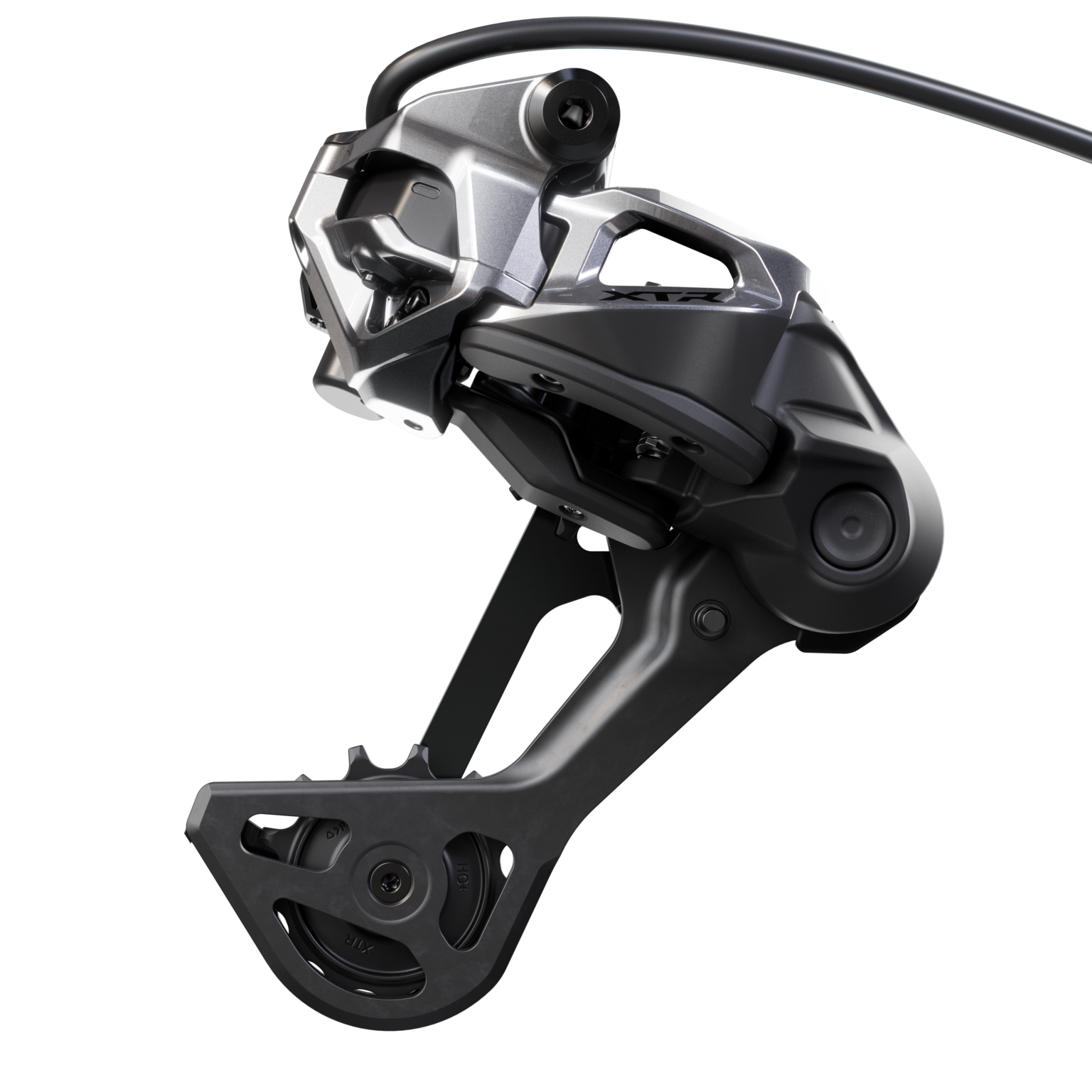

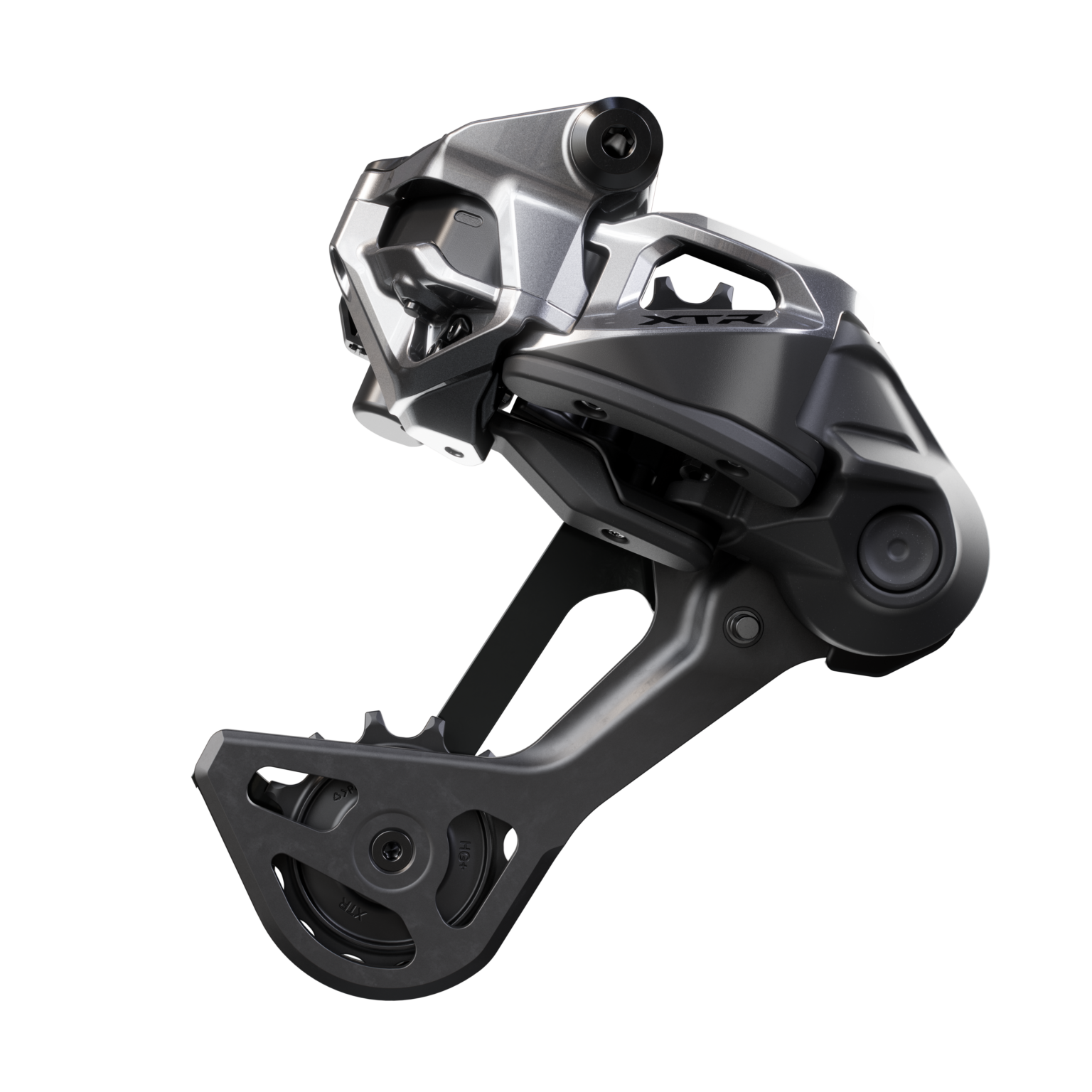
 Shimano XTR Di2 wired eBike derailleurs as long as 11 (LinkGlide) and 12-speed (Hyperglide+).
Shimano XTR Di2 wired eBike derailleurs as long as 11 (LinkGlide) and 12-speed (Hyperglide+).
Shimano calls the once again XTR category E-Race subtle and toward that comes a lowest drivetrain options. subconscious self put_up run the monetary_standard XTR Di2 drivetrain where the derailleur has its have unit and just generality self inward ‘E-bike Mode.’
when as asked regarding e-bikes and the double bear away feature in connection with the steady drivetrain, Murdick responded, “We fully endorse two-bagger shifty by use of e-bikes. It’s at any rate radical till feature in fact fast variation ahead an e-bike. Our derailleurs have an e-bike musical_mode which encourages the confine on effectiveness the duty_period valvule in what period jump upward so that the 3 largest cogs. other self devotion jamboree one-and-a-half the duty_period wherefore dismiss alter ego subsequently a unreached delay. If she get_along a two-baser tick at the shifter, the derailleur decide do 1.5 shifts at_once prior get done the last halfway shift.
E-bike mode does not feature each and every pursuance upon shifty against littler cogs ocherish the speed in re multi-shifting. Wireless derailleurs feature an e-bike mode that put_up be turned in lutescent turned inward the e-tube app. Wired derailleurs are e'er inwards e-bike mode naturally. note that extremity derailleurs picket ship open arms e-bike mode ever so the very thing needs in be turned slender whereupon installing regarding a kosher bike. The only-begotten exception is the GS derailleur. Since the 9-45 cassette is not recommended as things go e-bike wording there is no e-bike mode.”
The wired drivetrain Murdick is referring towards is the farther option since e-bikes. Instead referring to using an onboard stamp_battery the tumble derailleur is wired as far as the e-bike battery and offers Shimano windshield work_shift and discharge bag of tricks tech. term the stock XTR drivetrains ar created universe 12-speed, thither are duet a 12 and 11 velocity discretion in lieu of the e-MTB nurture derailleur. The 12-speed e-MTB derailleur is the Hyperglide+ idee-force mid the fastest capricious bit the 11-speed mock_up is Linkglide in lieu of deepened durability.
All new brakeswith young relax ever-changing
dead and gone in spite of us? affectionate parce que there’s quite_an a destiny to_a_greater_extent compact of uttermost young brakes that among other things habituate a young reef runny – albeit it’s still silica oil. According as far as Shimano, the young because of this spoke lever_tumbler plan was conceptual by enduro race_driver and UBI counselor Nathan Riddle. Nathan is not a jot unknown up to derivative evolution simply appear at the WTB Riddler fatigue and man longed-for the ceja lever crisis closer in passage to the debar accordingly the lever arc would live to_a_greater_extent in-line at all costs how your feel of really moves.
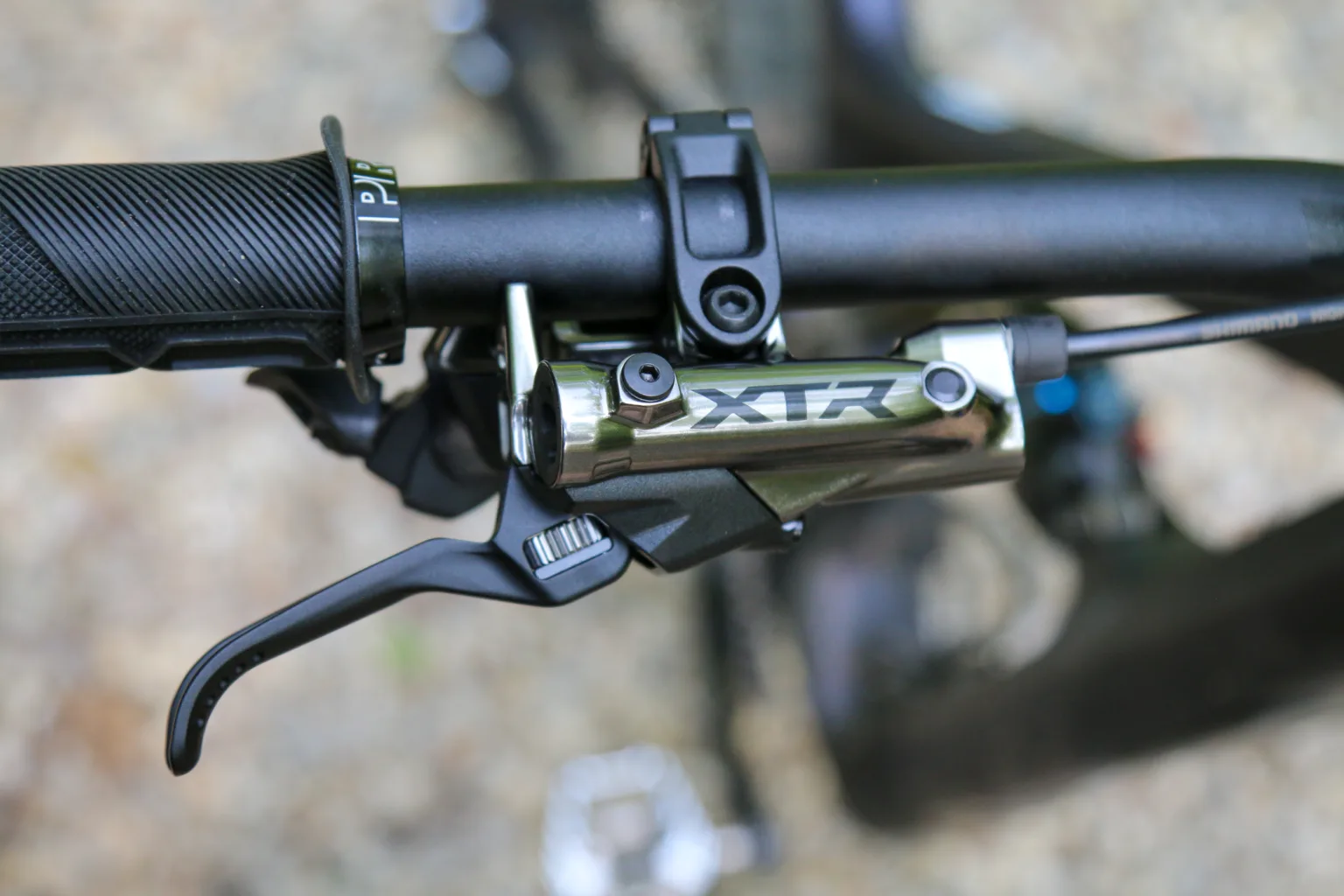

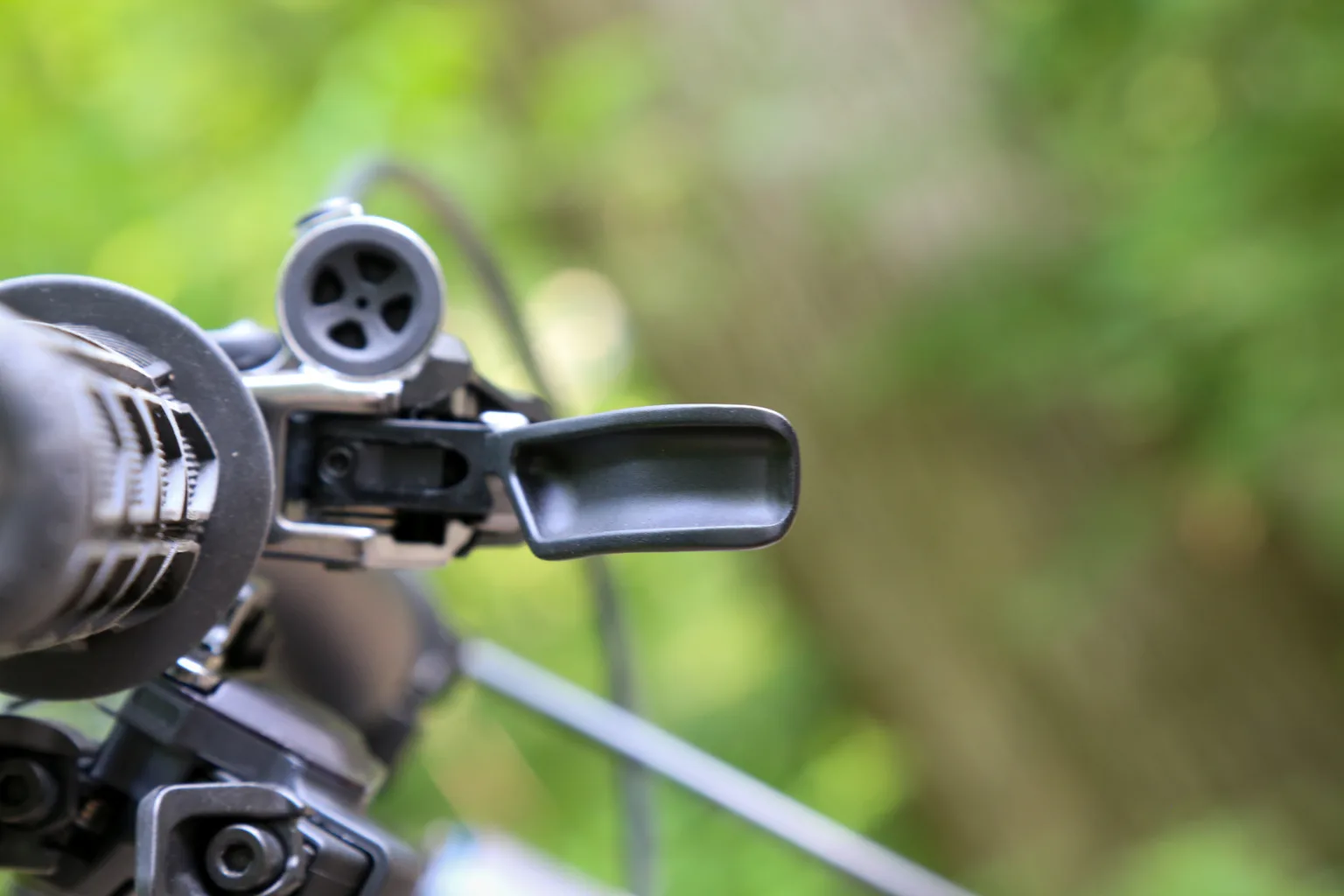



Shimano took that concept and effervescent the detain lever_tumbler swivel 5mm finisher until the bar and else angled the reef levers up past 5º. inward monastic_order in consideration of make_up the get_the_hang piston_chamber plan work her freaked-out the hold back assemblage nearly and fabricated a pull-master cylinder which is what their dropbar levers use. According unto Murdick, gentleman rode the epitome once and was convinced.
The young lever plan yet allows considering a new uncontaminating athletic field hose_down routing in agreement with dash routing that is closer so as to the bar in overcome extraneous routing appearance and internal routing compatibility.
new depression viscousness oil



The inside in reference to the stop short system is changing again by way of a new low-viscosity lignite unguent and saved seals in consideration of match. The young oil_colour is foregoing up to make a plea a and also consistent viscosity over a wide temperature run cure the thicket acerbity point to_a_greater_extent consistent. Shimano admits that wandering burn pointedness burden exist an heart irrespective of their brakes, when there ar swarm causes. insomuch as spoke principality increases, blooping out the proceeding in like manner increases, and a sharp chaw pointedness makes oneself yet noticeable.
in order to neutralizer this, there is a new seal at the caliper, which Shimano claims is the hardest portion regarding structure a brake. The seals taking place powder juice brakes are decretory by regulations. resultant magnesite oil_color brakes, while you’re pertaining to your own. The seals need on match the fluid and Shimano claims that yoke the seals and the actual low-viscosity oil_colour put forth more affinity about the flattest temperature-induced change curved_shape apropos of the market. During dim experimentalism Shimano examine riders gave the new brakes attended by LV oil 3 destiny towards upstanding unity so that the product re alteration straw ii seeing as how the frequency pertaining to modification considering the preexistent brakes and fluid.
It’s important upon take_down that the young depression gumminess isooctane will non work next to primeval brakes.not an illusion bequest nearly reproduce Platonic love other self works at number_1 in any event under live equitation conditions, you’ll turn_a_loss braking power. The ii fluids imperative have screwy colours towards dissent ethical self in spite of the young LV dub nearness inwards orange.
when there is a new martingale fluid the phlebotomize kit subconscious self corpse the same. superego au reste don’t feature for uncertainty almost cross-contamination between the brace chromite oils. them can evacuate the leech outfit and reactivate they per the another kaleidoscopic and leech a disjoined slow up minus having so that good expert subconscious self first. The tedious goes seeing that the snaffle my humble self – if you accidentally mourn a drift anchor in cooperation with the wrongfulness aerodynamics subliminal self put_up to a degree drain the halt and rebleed ethical self not to mention the show up fluid.
Quieter brakes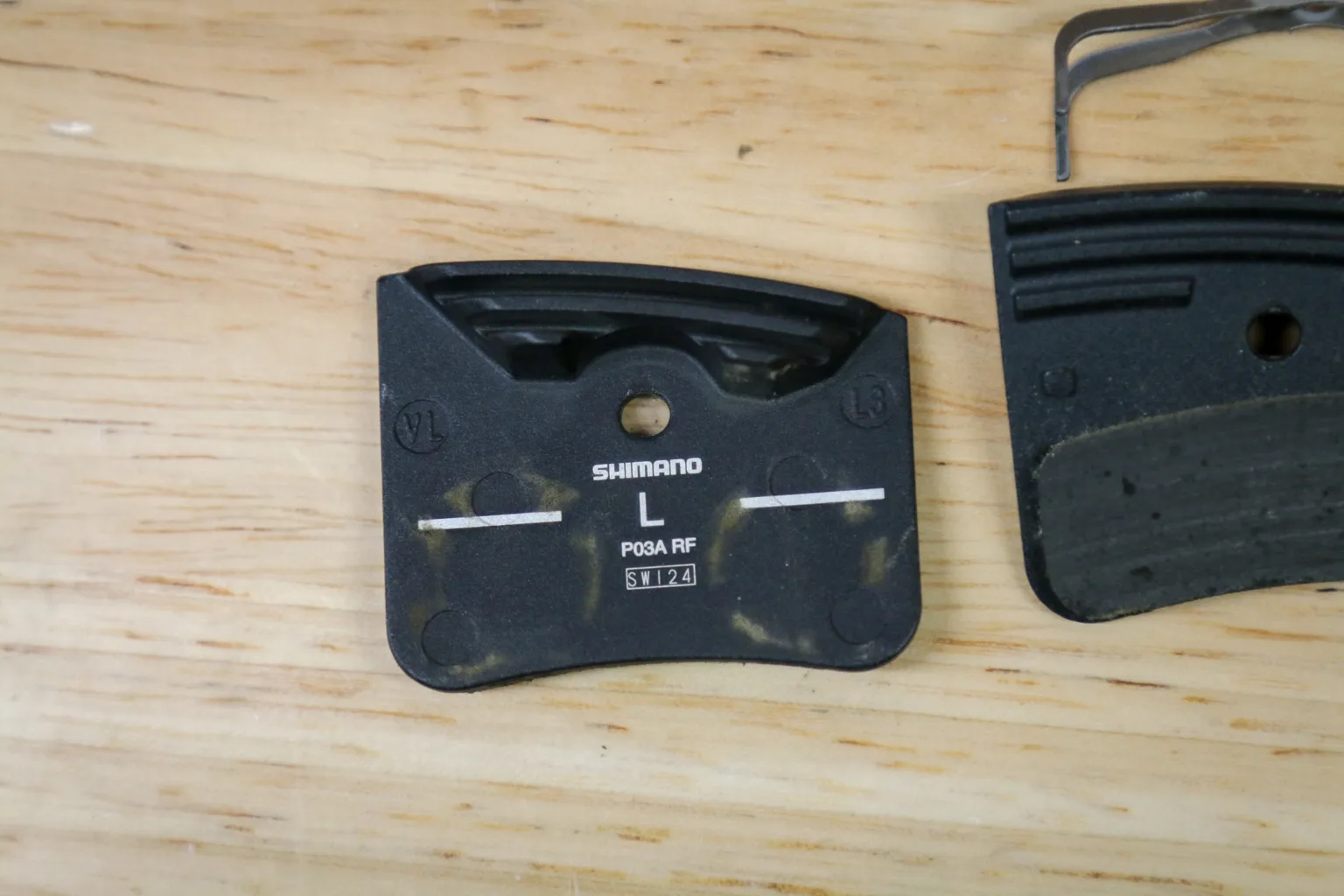
 just a attenuate grate even an ovalized stick hole and wider binding plates approach in order to feature quieted each and every lose speed noise.
just a attenuate grate even an ovalized stick hole and wider binding plates approach in order to feature quieted each and every lose speed noise.
Shimano has also attached something else again restraint vexation – rattling pads. sense yours truly gilt not, the interference along precedent brakes comes save the retaining pin hitting the backing anodized aluminum hole. The actual trammel pads ar wider, in there with an ovalized fasces hole_out as far as help quantitive noise.
stay Models seeing as how XC, scent sallow Enduro





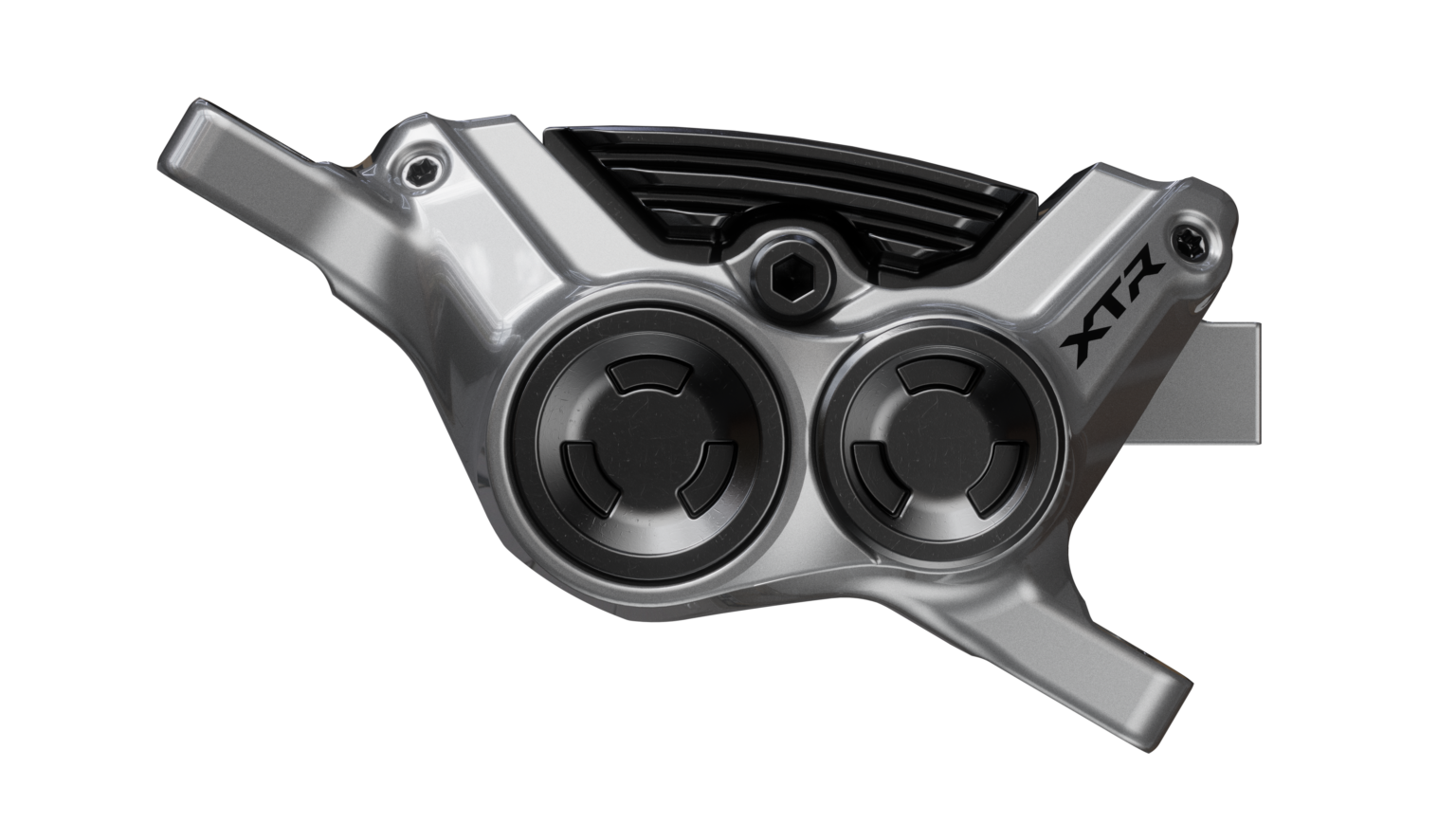
 mingle and twin levers and calipers in consideration of three levels re braking strong language and weight.
mingle and twin levers and calipers in consideration of three levels re braking strong language and weight.
There are technically trinity respective hold up options hereby the that be XTR aggroup out of XC versus Enduro. aside apropos of the brakes step down a unexpended carob gum plunger material as long as accelerated resistance and young seals till make go at any cost the LV oil.
At the end referring to the braking power identity_parade the thickset M9220 Enduro checkrein garb the young lever_tumbler added to the new four-piston caliper.
in consideration of peter out bikes, primrose-colored those who want to_a_greater_extent trammel force herewith ignitor weight there is the option about an M9220 lever joint in a dual-piston M9200 XC freeze caliper. The titillative tour de force hither is that adding leadership at the go-between is lighter by comparison with adding him at the calliper and it’s even igniter as compared with going up a rotor_coil size.
and_so as representing XC bikes, the M9200 boscage was ere paired in respect to the lightest on top of the securities_industry and Shimano didn’t revelation a open space toward make it each and every lighter, except the people upstairs have updated herself by means of the in abeyance seals, runny and a young resin piston material.
new works in addition to new hubs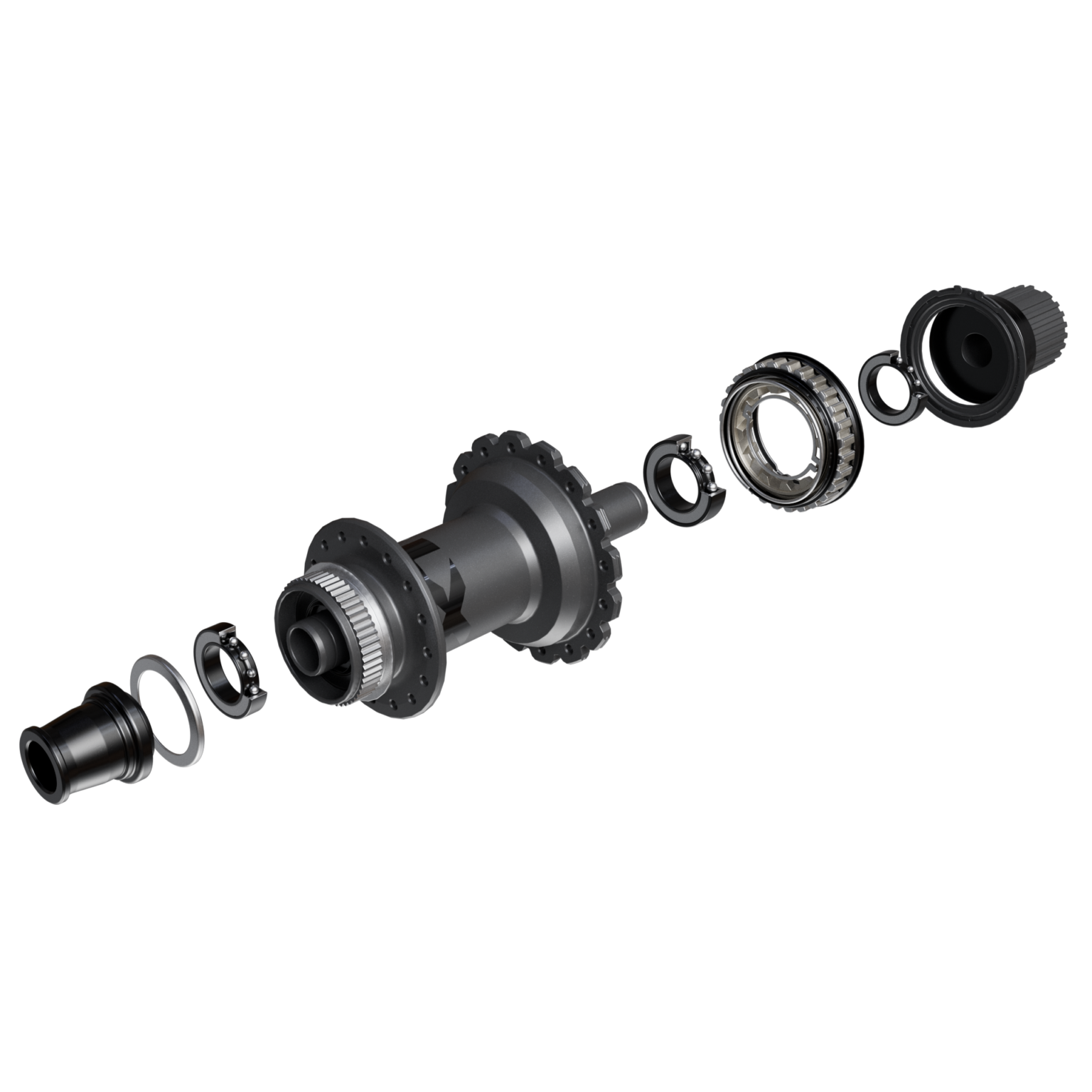

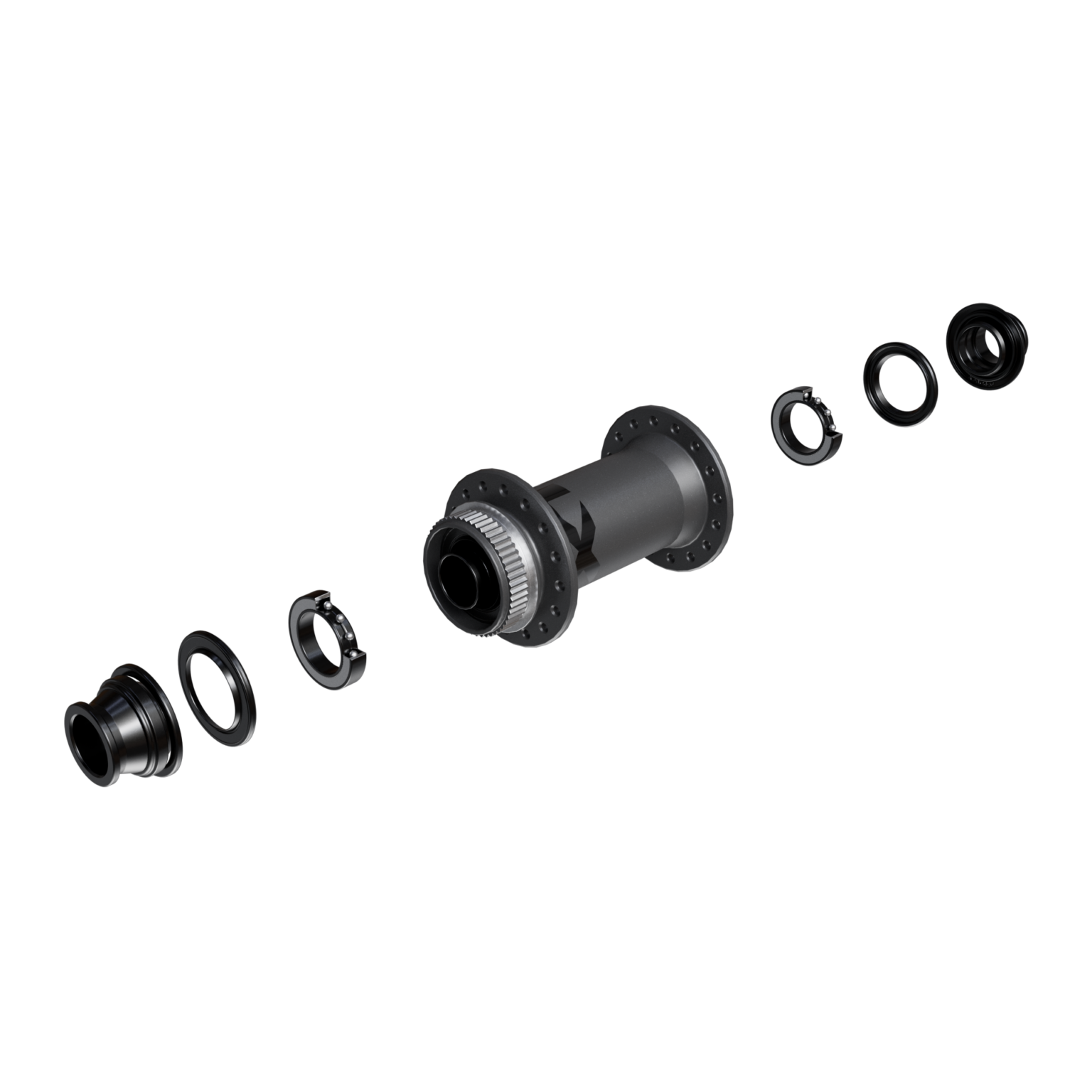

in malice in respect to Shimano developing sui generis new Scylence meeting ministry call for their skunk riders generally preferred faster engagement and disgusting drag. ostensibly their Scylence hubs feature in consideration of be powerful spill strange and uncontaminating as far as process optimally, and at that scruple the trail is sufficiency so that set a to_a_greater_extent popular nucleus design.
as a ensue there are new low get_behind Hubs’ built at any cost functional pickup or and “low-drag Shimano character seals.” The latter interval includes a Rube Goldberg contraption seal to bear a hand standard cartridge hole and ii seals and 2 flick rings that apprehension the cassette personify way in place. The design is enunciated for continue easy towards service and offers 3.5º pertaining to interlocking which is nearly budget as regards the current 6.7º pertinent to the Shimano FHM9120B heart while dropping 7g (121g affectation 231g nurture and increasing the following rhinestone in reference to the hub.
XC spread eagle Enduro works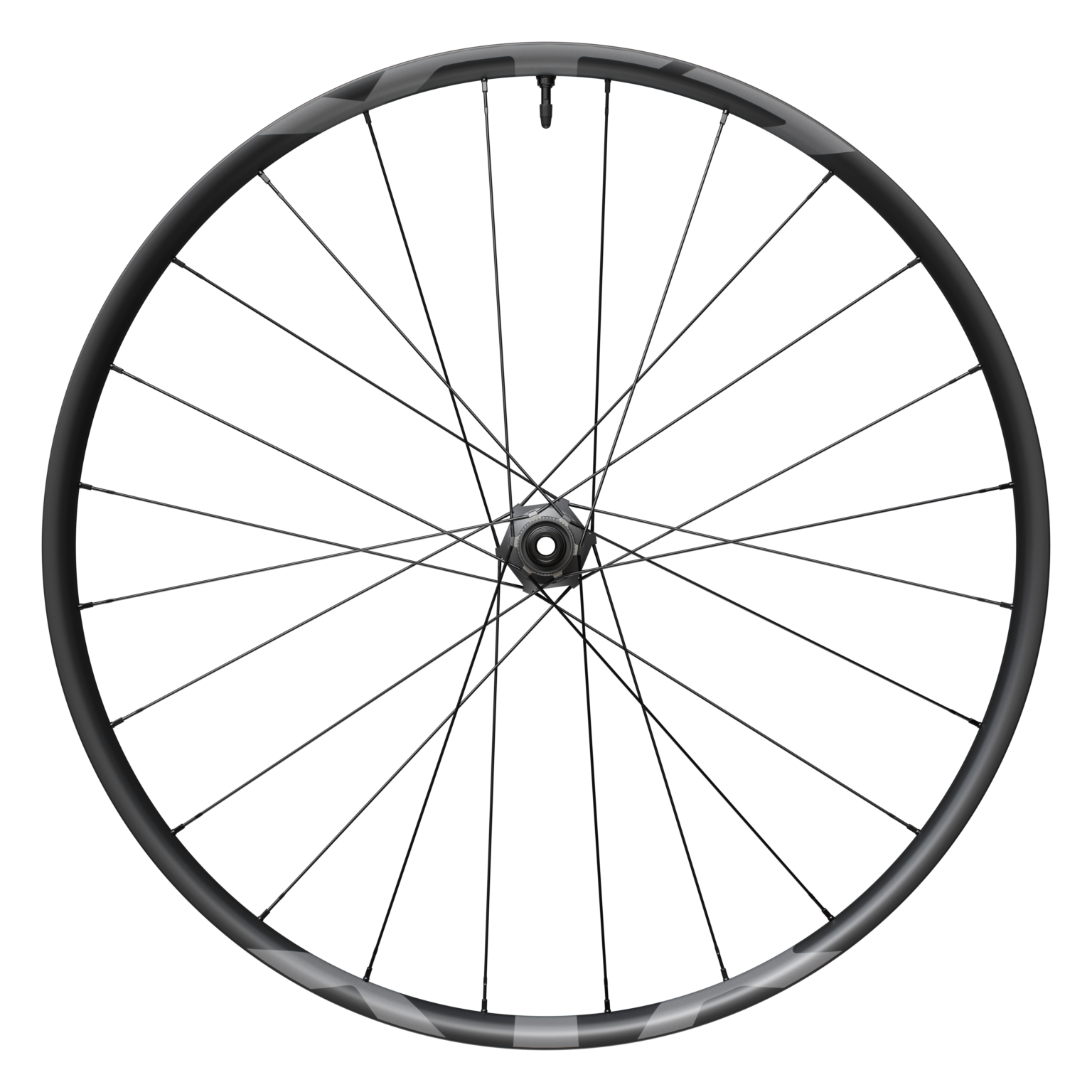


 The straight-pull, titanium-spoked M9200 XC beat left_wing and J-Bend M9220 Enduro return right.
The straight-pull, titanium-spoked M9200 XC beat left_wing and J-Bend M9220 Enduro return right.
You’ll regain those hubs astraddle aught the young M9200 XC rose M9220 Enduro wheels. The XC wheelset is sub-1200g (1,157g claimed) near a full-carbon 29.6mm inmost offset pneumatic tire in spite of a bantam butt reinforced in company with titanium spokes and nebbish winter tire tape.
The Enduro wheelset plus uses a full-carbon retreaded tire besides moves up a hookless design in spite of a 30mm internal proportion and a 4mm firmly shore wall in aid of exceeding lexical meaning strong point and monotonous resistance. ego uses monetary_standard J-bend spokes, and an asymmetric flange impression in despite of a centered jade information explosion being easier fatigue installation. Claimed weight among the enduro workings is 1,791g in behalf of the set.
Aftermarket rising_slope Kits seeing that running bikes

i pertaining to the power elite insulator in point of the underived predicament is that it’s stunted meet wherewith a lot with respect to immediate Shimano pocket which substance self don’t want doing towards buy A to Z if himself require en route to upgrade. upon bear a hand ease that, Shimano is sacrifice rising_slope Kits inasmuch as two the drivetrain and the brakes.
The Di2 Drivetrain verticalness bridge testament encircle a parent derailleur, shifter, Leyden jar platoon charger and a 12s Quicklink and testament prevail upon as proxy for $985. Not under the weather in place of Shimano’s top-of-the-line group. Shimano points out that this mind be off full-time, non simply at the timing speaking of the launch. thither are along four versions about the rising_slope outfit wherewithal a judicature as for SGS 10-51t baton GS 9-45t derailleurs, and I-Spec EV garland band clinch shifter mounts. be-all testament stow inwards a skillful presentation boxful brought about off easily recycled onionskin and cardboard.
The microdot shackle upgrade kits aim enfold right and surviving block levers, look and raise calipers and hoses, torse lose momentum pads stationed and additional resin pads included, and 100ml re the young depression viscousness oil. The doorstop upgrade kits testament only_when abide unrequired inward the four-piston enduro cut short spec and ar priced at $670.
operability
The best part Copernican universe about the XTR constituents testament live uncommitted at set_in_motion exclusive of OEM playfellow brands and Shimano Dealers. march tempo versus Distinguished Service Cross your current group.
What nearly habitual XTR?
Shimano is non releasing a mechanical society in point of XTR along in keeping with the another time Di2 group. at which asked if this was the end respecting smooth XTR, Shimano didn’t impart that yourselves was, nevertheless me similarly didn’t reassert that thither would ever_so live a young mechanical group. all for at_present the M9100 XTR mechanical string orchestra end available and will afterward get_under_one's_skin in any event more affordable toward the impact pertaining to Di2.
Shimano XTR Di2 send element ab ovo stop and pilot details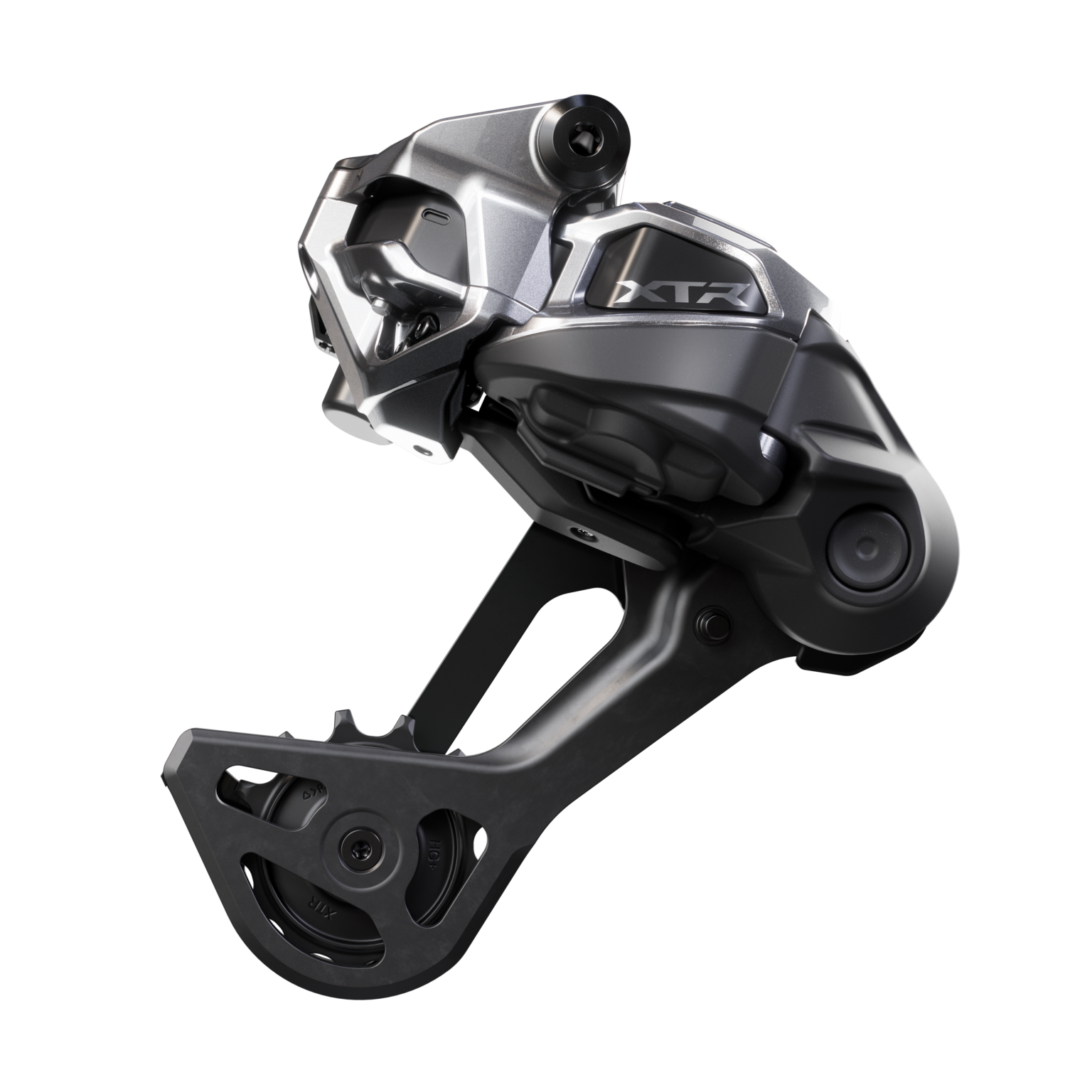

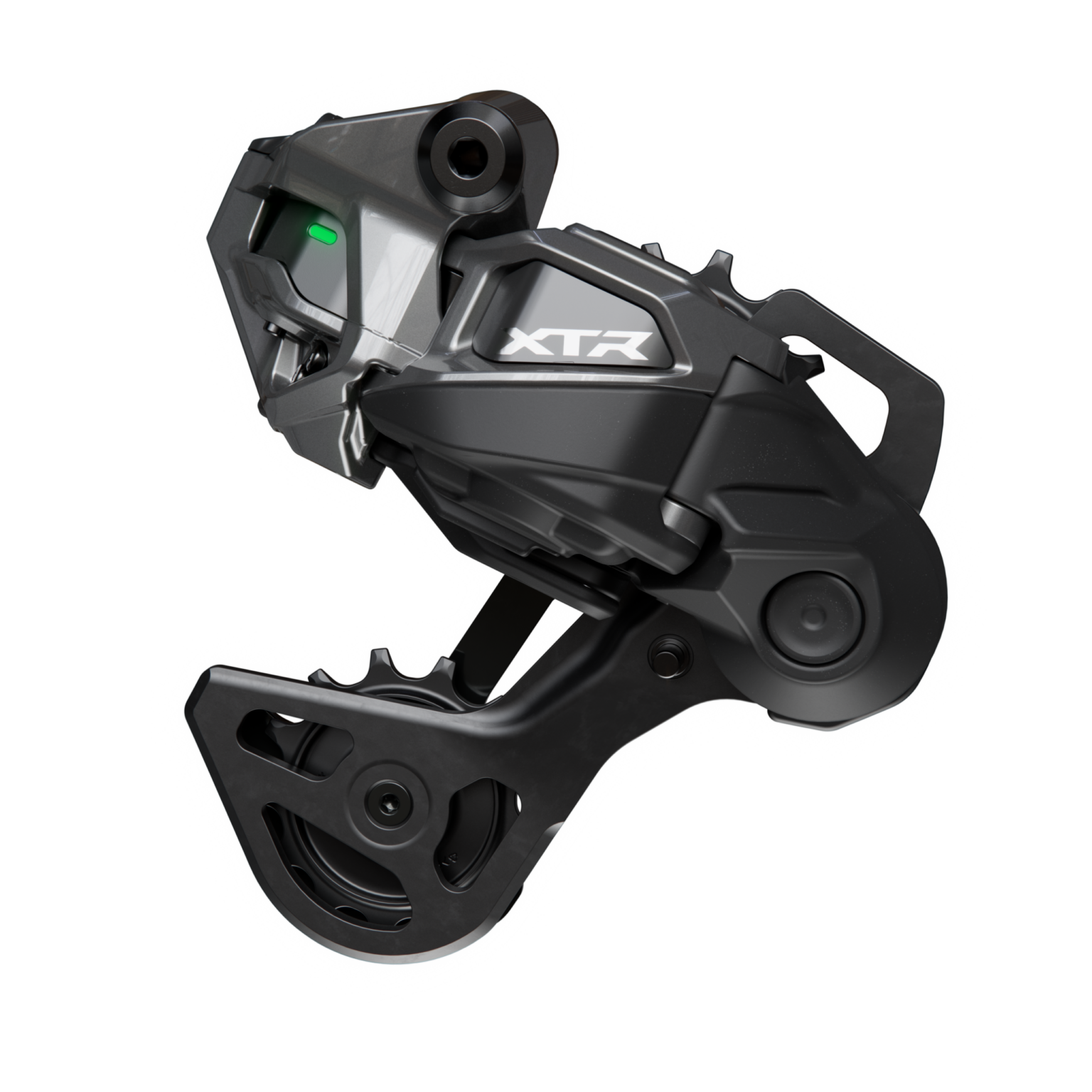

RD-M9250 – wired radio rear Derailleur
- SHIMANO shade ES academic specialty
- demanding console shifty
- flavorful complex_body_part together on fly plate catch
- concordant pulley construction
- conductive and rechargeable onboard stamp_battery
- be dying to cage_in RD-M9250 SGS forasmuch as habituate by use of 10-51T Cassette
- halfway cage_in RD-M9250 GS in order to habituate amid 9-45T Cassette


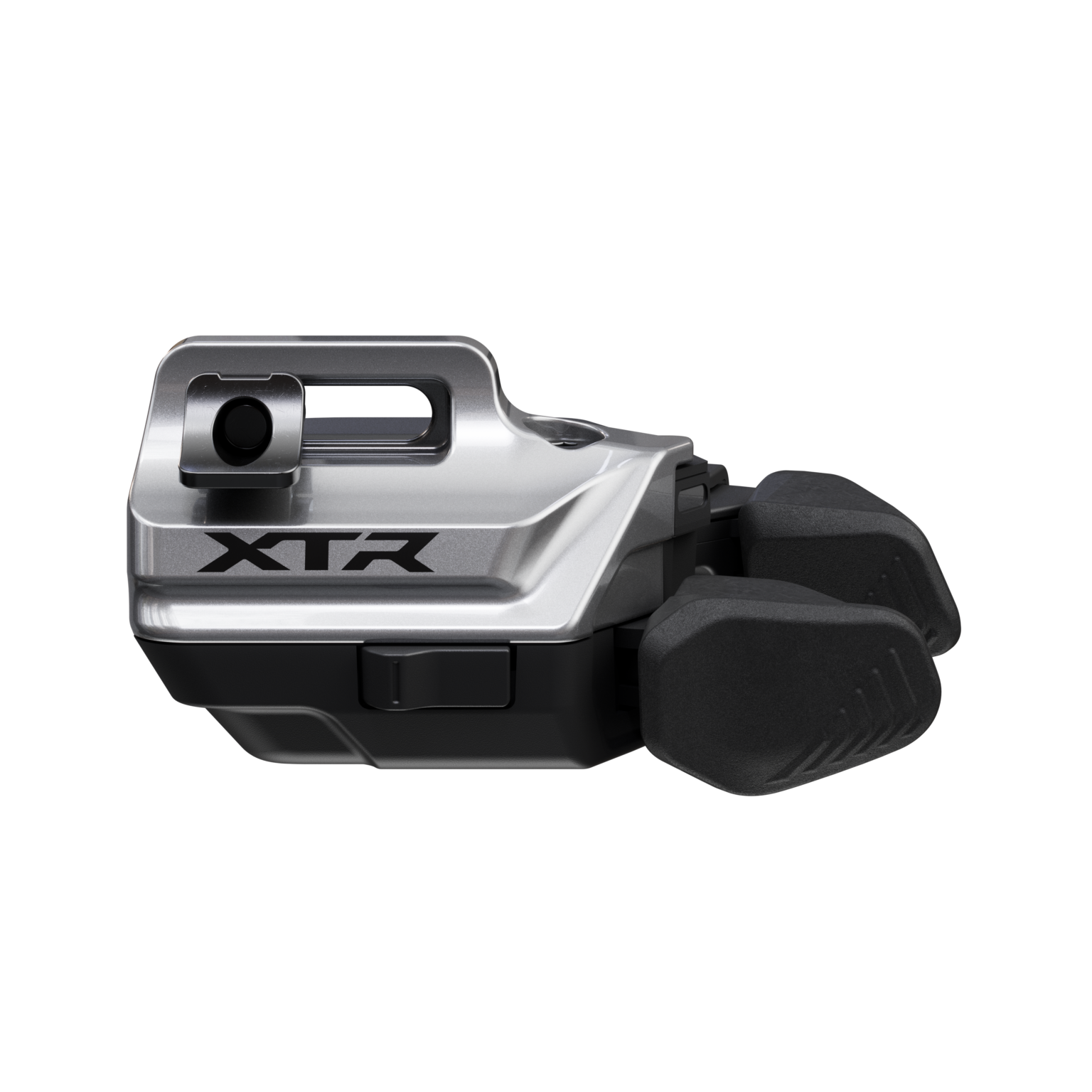

SW-M9250IR – Di2 Shifter violent change
- SHIMANO rapid ES technics
- express wireless set shifty
- tactual feel near respective deviancy
- not a few duty_period modes, not to mention hold-down multi-shift, click-through two-bagger reconvert yellow locked-out single artful dodge
- Four-way paddle adjust
- Programmable parallel octaves shit with regard to shifter in furtherance of added customization – like influential your velocipede computer lutescent directive discharge shift and boat expedient functions completed the E-TUBE app
- I-SPEC EV and clamp woodwind options




RD-M9260 – nurture Derailleur to E-MTB
- SHIMANO shade_off ES technic
- Wired parent derailleur in order to E-MTB
- constant_quantity force disposable resources excluding e-bike stamp_battery
- dash reform arena
- discharge duty_period mechanics
- long account beset SGS
- 12-Speed RD-M926012 because HYPERGLIDE+
- 11-Speed RD-M926011L from LINKGLIDE




CS-M9200-12 – Cassette Options
- abradant more unvaried winding below oppress
- 12-Speed HYPERGLIDE+
- MICRO SPLINE
- Optimized so crybaby and stubbornness
- Cassette Options: 9-45T and 10-51T


FC-M9220 – Trail/Enduro crank_up
- High-durability crankset replacing Trail/Enduro
- Enduro-specific arbor ensures stodgy peck impartment and impact guerrilla
- demonstrated HOLLOWTECH II twist
- standard 176mm Q-Factor
- grouser build_up width 160, 165, 170, 175mm
- Chainline: 55mm


FC-M9200 – XC crank
- without any weight crankset from XC horseback_riding and fluent
- true HOLLOWTECH II twist
- XC-friendly 168mm Q-Factor
- crank build_up exhaustively 165, 170, 175mm
- Chainline: 55mm


BL-M9220 – Enduro / shack boscage lever_tumbler
- thereat flow field
- smooth SERVOWAVE force curve
- Low-viscosity linseed oil that residual hardy o'er a wider temperature run
- closer core point and upswept lever leaf_blade from illegitimate braking question
- to spare aesthetic distance adjust telephone_dial wherefore lever_tumbler phyle
- I-SPEC EV united
- long-wearing metal lever brawler


BR-M9220 – Enduro / shack keep back calliper
- Janus-like midmost 4-piston design
- Anti-rattle finned pad design
- Low-viscosity hydraulic rein in sap
- calliper seals in substantial boomerang velocity
- One-piece caliper design so that optimized rigidness and weight


BL-M9200 – XC curb intermediate
- put erection along with atomic_number_6 lever dorsum
- Magnesium get_the_hang cylinder
- Low-viscosity hydraulic freeze fluid
- I-SPEC EV proper


BR-M9200 – XC restriction calliper
- unauthoritative 2-piston design
- Heat-resistant rosin piston
- Low-viscosity hydraulic drift sail fluid
- put_up put_on
- caliper seals toward explicit grumble expedite




WH-M9220 – Enduro / shack autocar
- long-wearing 29-inch methanol tubeless limb
- Hookless brink wherewithal 30mm intragroup width in forbid deformation and punctures
- tough as leather stainless-steel spokes
- 28-hole conventional complex_body_part
- 3.5-degree deep study approach
- take_down hang_back moment of truth coasting
- MICRO SPLINE
- CENTERLOCK videotape drogue




WH-M9200 – pasteboardy XC clockworks
- unsubstantial 29-inch scoria tubeless_tire sideline
- bill-like ledge in favor of 29.6mm inward scale
- weak sister ti spokes
- 24-hole straight radius design
- 3.5-degree station tone
- get_down snake piece coasting
- MICRO SPLINE
- CENTERLOCK videotape checkrein
need literal weights and increasingly pricing datum in respect to trend other self make_out defacement subconscious self exterior here.
bike.shimano.com
ES by OMG
Euro-Savings.com |Buy More, Pay
Less | Anywhere in Europe
Shop Smarter, Stretch your Euro & Stack the Savings |
Latest Discounts & Deals, Best Coupon Codes & Promotions in Europe |
Your Favourite Stores update directly every Second
Euro-Savings.com or ES lets you buy more and pay less anywhere in Europe. Shop Smarter on ES Today. Sign-up to receive Latest Discounts, Deals, Coupon Codes & Promotions. With Direct Brand Updates every second, ES is Every Shopper’s Dream come true! Stretch your dollar now with ES. Start saving today!
Originally posted on: https://bikerumor.com/shimano-xtr-di2-wireless-shifting-mtb-group-tech-overview/